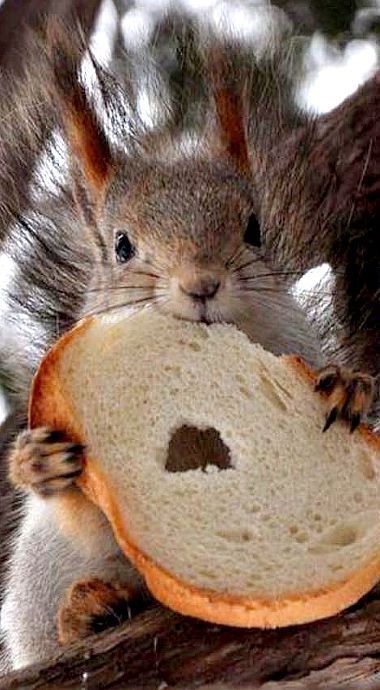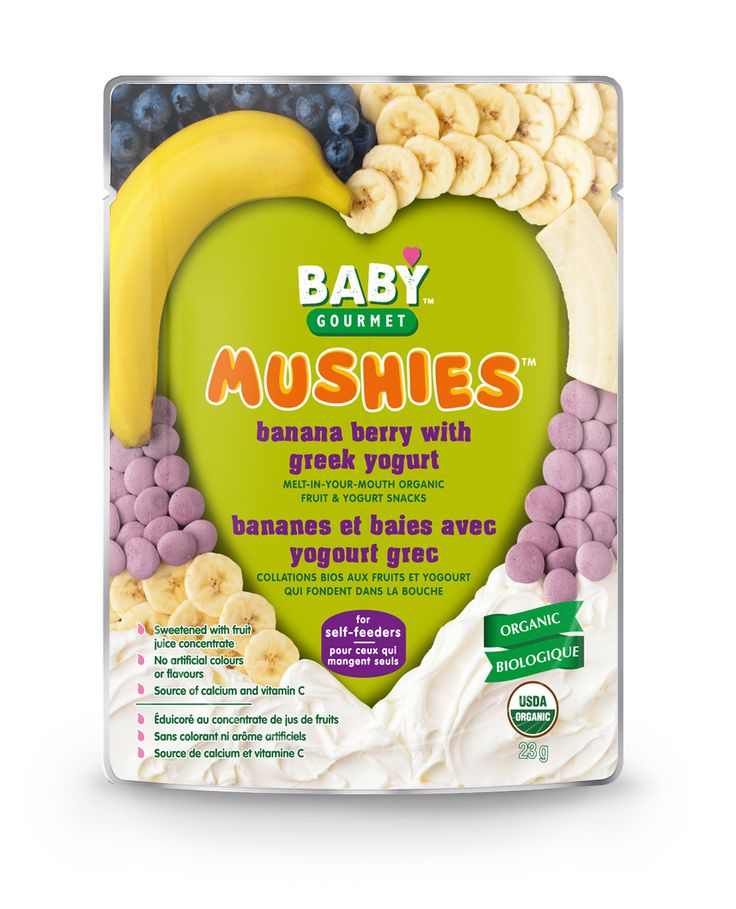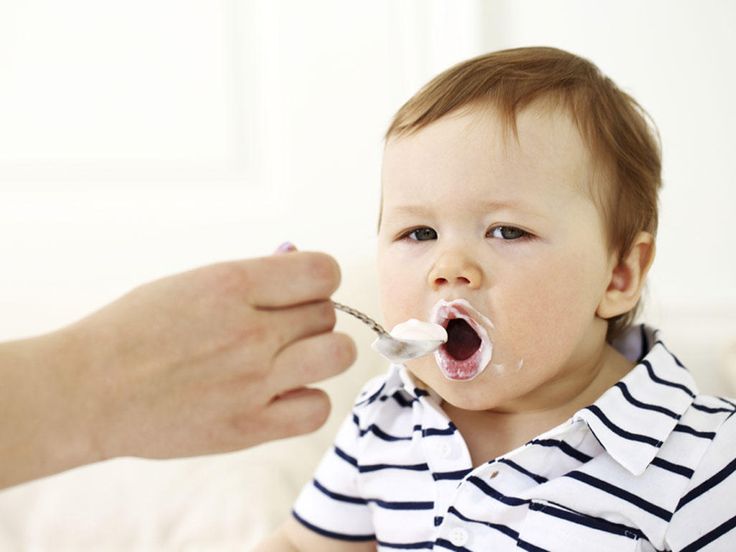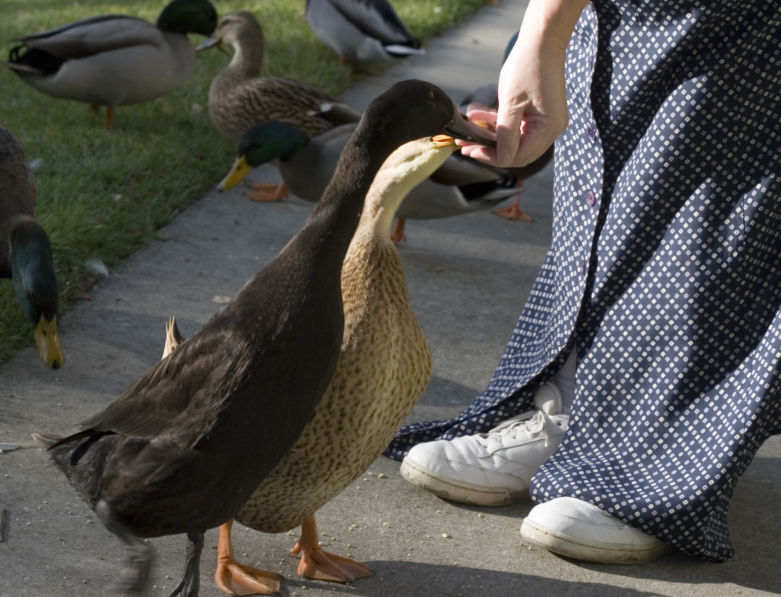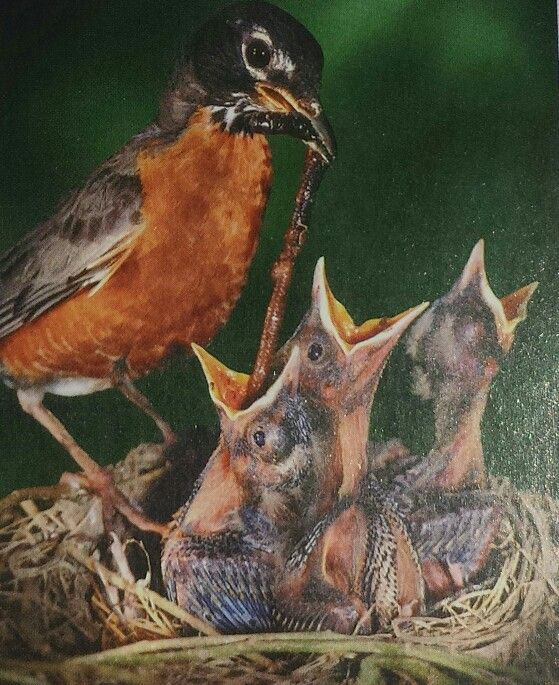Baby squirrel food habits
8 Things Baby Squirrels Like to Eat Most (Diet, Care & Feeding Tips)
Knowing the right food and shelter requirements for the baby squirrels is important if you truly want to take care of them.
Even though the squirrels are not necessarily good pets, you can still take part in caring for them and ensuring they get whatever they desire to grow healthy.
This article will tackle some of their habits and the foods that baby squirrels eat.
Table of Contents
- Squirrels Habits and Biology
- Do Baby Squirrels Eat Dirt?
- What Do Squirrels Like to Eat Most
- Food Avoid to Feed Baby Squirrels
- Tips to Feed Squirrels
- FAQ
- Summary
Squirrels Habits and Biology
The squirrel is a small animal categorized into three different groups depending on its ecological niche, social structures, and physical characteristics. They include tree squirrels, ground squirrels, red and gray squirrels, flying squirrels, and captive squirrels. The exhaustive list of all the squirrel species is way above 200 the world over.
The squirrels are quite good swimmers even though they do not swim very much. They also have outstanding jumping abilities and can cover about five feet when jumping vertically and over ten feet when leaping between one object and another. The sprinting speeds of these small animals are also commendable as they have fast speeds. With a bodyweight of about 1 pound, the squirrels can easily climb trees, walls, and branches.
These small animals are omnivorous, which means they have a broad range of foods, including fruits, nuts, seeds, vegetables, and meat. The average length of the squirrel is 20 inches if measured from the nose tip to the tail, and though small, there are instances where they have ganged up against much larger animals.
One of the fun facts among the squirrels is that the flying squirrels don’t have any wings. The squirrel spreads its limbs out to allow it to jump from one tree to another without any problems.
Spreading out the limbs allows the squirrel’s skin to appear as though they are wings helping them to glide in the air cautiously.
The squirrels start bearing young ones when they get to 1 year old. The baby squirrels are born after a gestation period of around six weeks, although they are hairless, blind, and deaf at the time of birth. The baby squirrels have to be weaned after around 90 days.
Do Baby Squirrels Eat Dirt?
The baby squirrels are omnivorous, and their meals constitute vegetables, meat, fruits, and nuts. It means that their diet is more or less like that of humans.
These creatures bury their food in the ground, and you are not alone to think that they eat dirt.
In extreme circumstances and instances where food is rare, they have been found to eat soil but only due to its need for nutrients but not as food.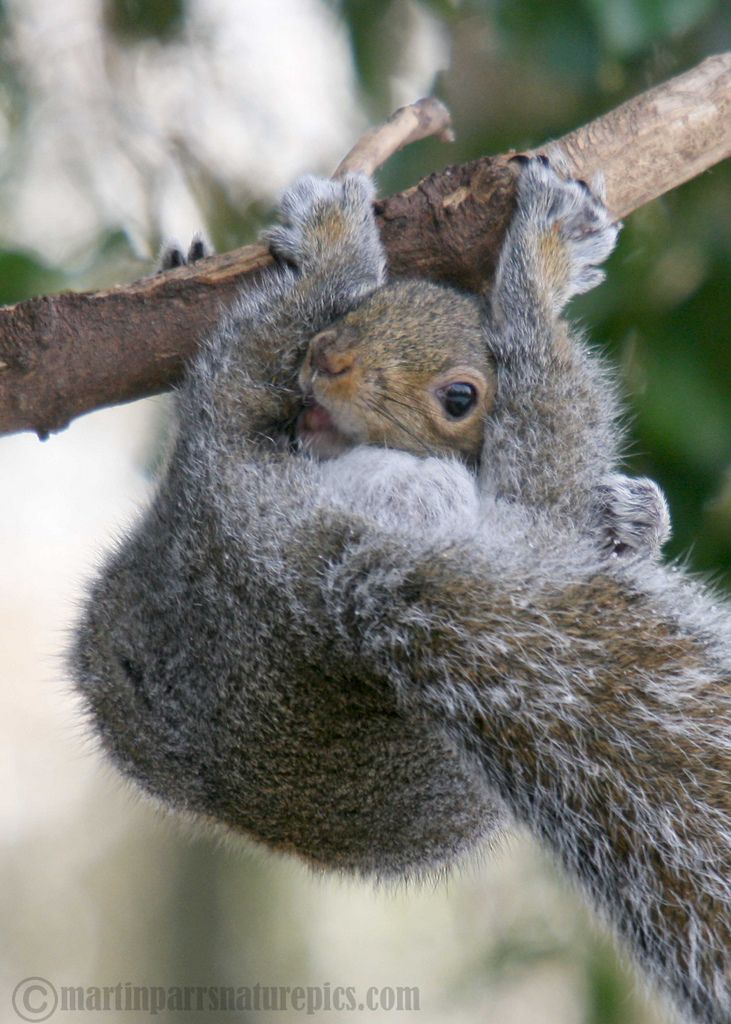
The soil provides nutrients such as magnesium, sodium, and calcium, which are deficient in nuts and seeds. They have also been found to eat tree barks for the same nutrients and roughage.
What Do Squirrels Like to Eat Most
During the early stages of a baby squirrel’s life, you should try feeding the baby with formulas such as PetAg or Esbilac, which are available in powder and liquid forms.
Try and avoid cow, goat, and soy milk, including any other homemade formulas which may result in death. At six weeks old, the baby squirrel will start eating solid food in very tiny portions.
As mentioned before, the squirrels are omnivorous and have a rich diet consisting of multiple foods, fruits, and nuts. The squirrels consume meat and vegetables even though they are mostly considered to love vegetables.
The squirrels consume meat and vegetables even though they are mostly considered to love vegetables.
The source of their meat is mostly carrion, lizards, mice, and at times baby birds. Here are categories of the foods that squirrels love to eat:
- Fruits – The squirrels love fruits such as strawberries which are a favorite. They also consume apples, grapes, watermelon, seeds, and berries. If you can offer slices of fruits to the squirrels, it gives them an enjoyable treat. You can hang the slices of peaches, apples, and pairs for them on strings. They also enjoy wild berries and Osage oranges.
- Seeds – The squirrels love pumpkin seeds since they provide low-calorie counts, spruce, sesame, and pine seeds.
- Nuts – Nuts such as hazelnuts, beechnuts, and walnuts are a delicacy for the squirrels. Some of the nuts that squirrels love include macadamia nuts, hazelnuts, pecans, almonds, walnuts, cashews, pistachios, pine nuts, chestnuts, pine cones, and hickory nuts.
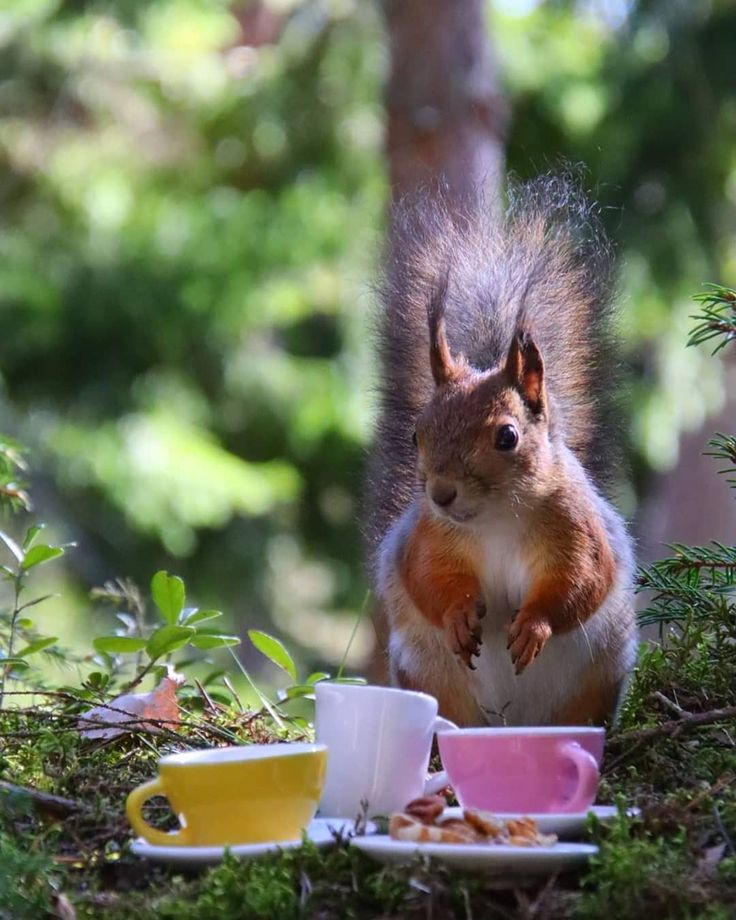 These nuts are a rich source of fat and protein for the squirrels.
These nuts are a rich source of fat and protein for the squirrels. - Vegetables – Squirrels are heavy consumers of vegetables that they love so much. They consume leafy greens like spinach, lettuce, kale, arugula, and chard. They also consume broccoli, Brussels sprouts, asparagus, cauliflower, eggplant, tomatoes, squash, peas, root vegetables, cabbage, carrots, celery, beans, and radishes.
- Insects – The baby squirrels will feed on small insects, especially in scenarios where there are no nuts, yet they need proteins. The insects they consume include grasshoppers, caterpillars, crickets, larvae, and butterflies, among others.
- Fungi – Squirrels forage mushrooms in natural settings like the forests to find fungi. The fungi include oyster mushrooms, truffles, and acorn truffles.
- C & S Products Squirrel Snak – It provides squirrels with seed cakes that are of high quality. It comes with fruits, nuts, and seeds formulation making it a rich diet for the squirrels.
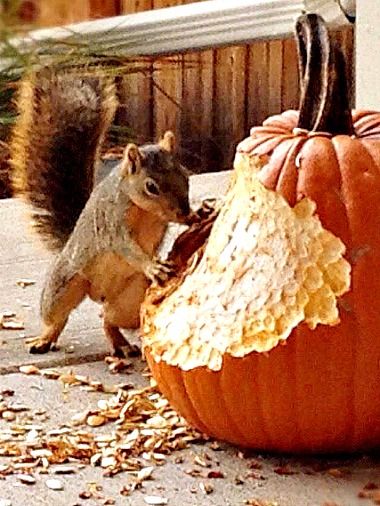
- Wild Delight Corn on the Cob – This product helps the squirrels with corn containing wildlife formula and reduced moisture levels for reducing the effects of mold.
Food Avoid to Feed Baby Squirrels
The baby squirrels can eat several foods at the appropriate time and age. Even with this variety, several foods you should avoid since they are not appropriate. Among these foods, some are completely poisonous and should be avoided.
- While individuals try to feed the squirrels around the neighborhood, it is important to note that although they enjoy foods such as grains, there are cereals that are harmful to them, such as those that come with processed sugar.
- Foods like crackers, hamburgers, cheese, and French fries pose the risk of damaging their digestive system even though the squirrels will still eat it up.
- Processed foods that contain chemicals and byproducts are not recommended either. It, therefore, means that you should not feed the squirrels on dog food or cat food.
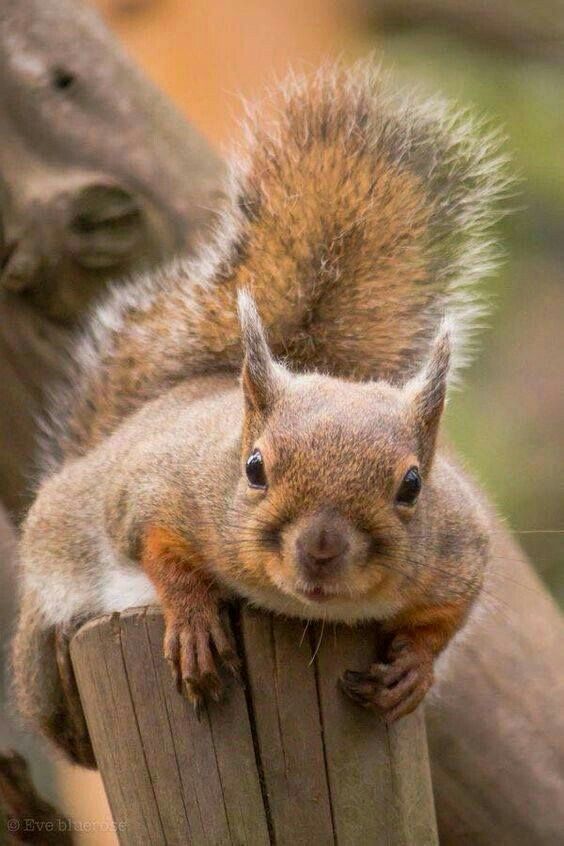
- Avoid feeding the squirrels on foods that are high on carbs, such as sunflower seeds and corn, since they have minimal nutritional value to them.
- Squirrels trust humans when it comes to feeding; this means they will eat anything that comes from you. It is therefore important for you not to feed them with human junk foods. Such junk includes foods like popcorns, cakes, cookies, potato chips, among other foods.
- Human and Animal Formulas – If you an avid reader, you will have come across blogs or sites that recommend feeding squirrels with formulas meant for babies, puppies, or kittens. Do not give these formulas to the squirrels because they contain high levels of preservatives and additives, which may result in nervousness, rickets, seizures, or even sudden death.
- Peanuts – While squirrels enjoy eating peanuts, it is not advisable for them. The peanuts are not nuts and are categorized as legumes. You can offer them to diversify their diet but remember that it offers little value in terms of nutrition.
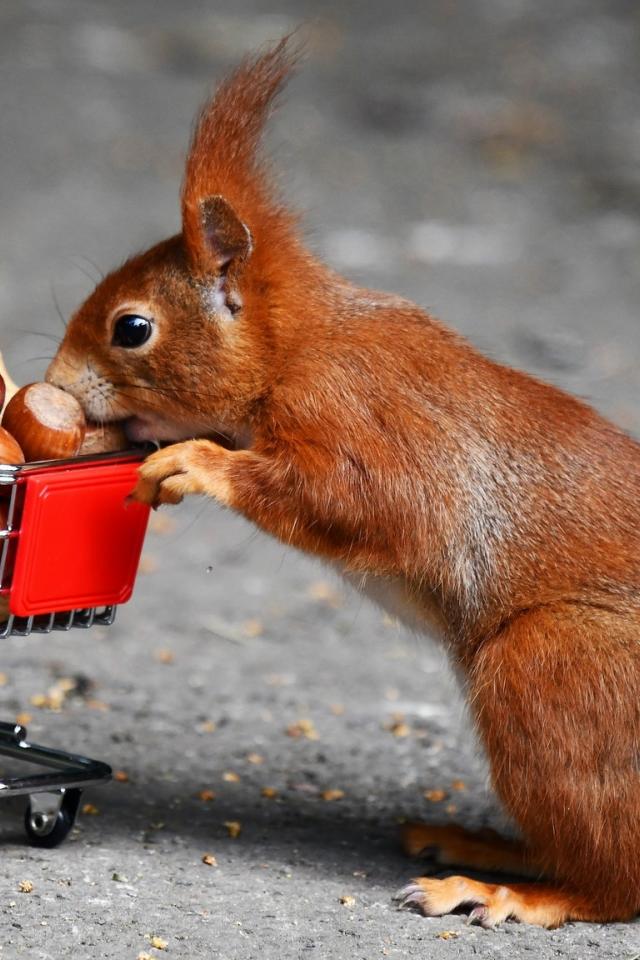
- Other foods that should be avoided include These foods include
- Fruit pits/Seeds
- Avocado pits/skins
- Salty foods
- Foods with a high starch content
- Pine Nuts
Tips to Feed Squirrels
There are several species of squirrels like tree climbers and ground squirrels. Feeding the squirrels will greatly be determined by the habitat, habits, and squirrel species.
It is also important to consider how the squirrels eat their food, whether they do it in one specific place or prefer grabbing the food and running away with it. Some tips for using when feeding the squirrels include the following.
- Understand the species of the squirrels you want to feed since the different species have different food preferences.
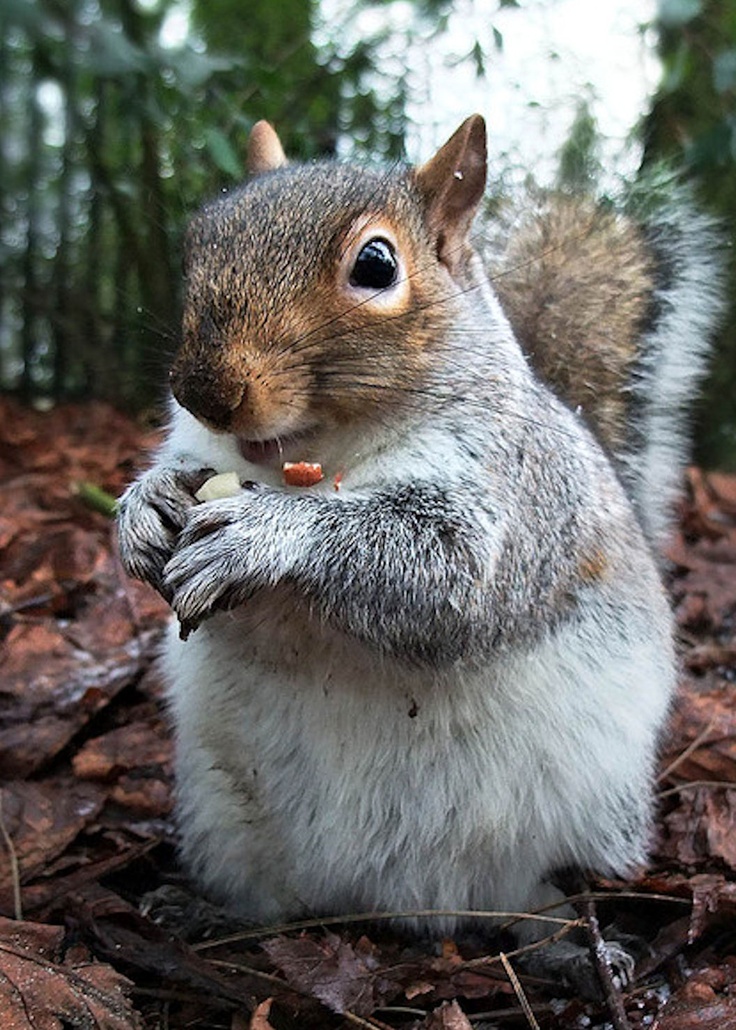 You can always conduct a simple search routine online to understand the food preference and plan.
You can always conduct a simple search routine online to understand the food preference and plan. - Ensure that the levels of the feeders are elevated above the ground. This act ensures that the eating habits of the squirrel in the wild remain heightened.
- Since squirrels can feed on the bird feeders, you must invest in designated squirrel feeders. The designated feeders will help keep the squirrels away from the bird feeders.
- Ensure to put some water for the squirrels in place that lets it remain clean. You should also change it routinely to reduce or eliminate the chances of it getting toxic.
- Squirrels take every opportunity they can to eat chicken eggs. If, by any chance, you rear the chicken near the feeding place, consider surrounding it with a pen that is squirrel-proof.
- To eliminate any bacteria, ensure to clean the squirrel feeders with soap and hot water together with the containers weekly or as regularly as possible.
- Since squirrels are rather active, it would be good if you could simulate a natural habitat to allow them to leap and run around.
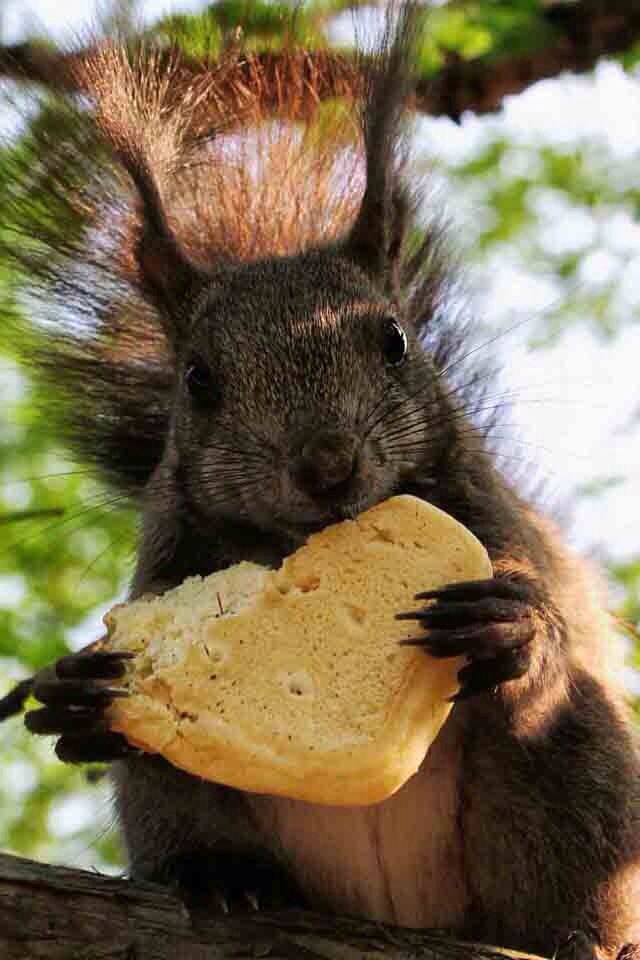 You should strategically place the feeders and the water containers in spots where they are safe from spillage.
You should strategically place the feeders and the water containers in spots where they are safe from spillage.
FAQ
Here are some of the frequently asked questions on this subject.
1. Can a baby Squirrel eat raisins?
Raisins are highly sugary even though they are not toxic to the squirrels. The squirrels should not be fed on foods that contain high levels of sugar.
2. When can a baby squirrel eat nuts?
The baby squirrels can only start eating solid foods after they reach the age of 6 weeks. Apart from the nuts, the squirrels can also nibble on sweet potatoes, apples, broccoli, grapes, nuts, and kales.
3. Can a squirrel eat bread?
The squirrels can eat bread, but they should only be allowed to eat the bread in controlled amounts. The ingredients of bread include cellulose and sugar in large amounts, which are not safe nor tolerable to the squirrel.
4. Will squirrels eat fat balls?
Fat balls are made of sunflower seeds, suet, and other dry foods, including peanuts. The squirrels eat the fat balls but should be prevented from doing so. You can use a squirrel-proof bird suet ball feeder to prevent them from accessing the fat balls.
The squirrels eat the fat balls but should be prevented from doing so. You can use a squirrel-proof bird suet ball feeder to prevent them from accessing the fat balls.
5. Will squirrels eat chicken?
Squirrels are known to eat chicken eggs whenever they find them. Although they tend to be shy, these small animals can cause devastating harm to your poultry farm or the chicken feed. If you have chicken around the place where the squirrels live, consider storing their food and eggs in secure places where they have no access.
6. Can Squirrels eat chocolate?
Chocolate has always been a delicacy, even for the squirrels, who probably love it even much more than nuts. Although you may be affectionate towards the squirrels, you mustn’t feed them on chocolate. Chocolate contains Theobromine, a highly toxic substance to the squirrels and may even result in death.
7. Can squirrels eat almonds?
Yes, the squirrels love almonds just as much as they love other nuts.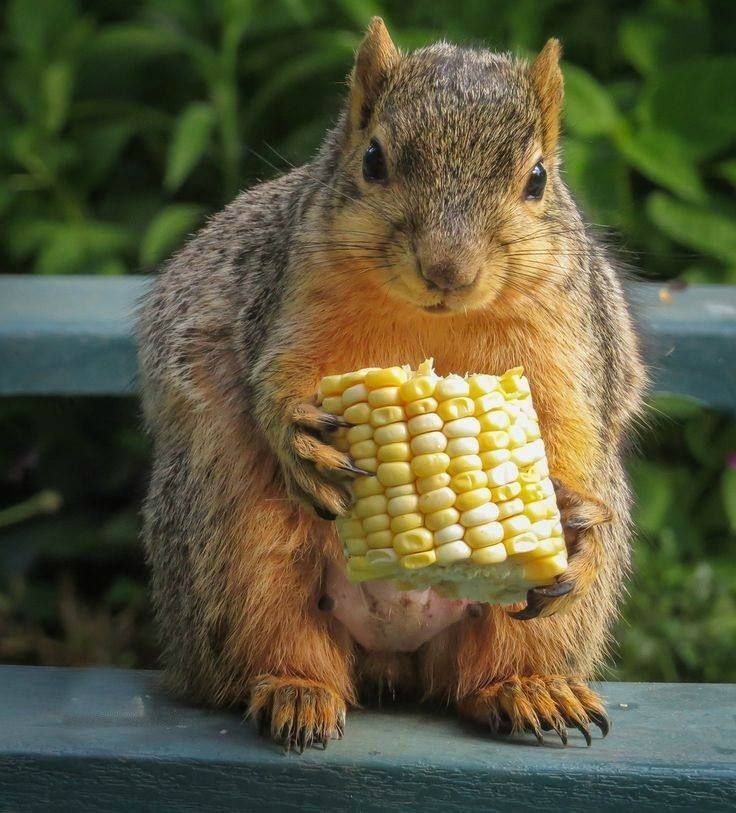
8. Will squirrels eat carrots?
Squirrels eat a lot of vegetables, including carrots, cabbage, cauliflower, okra, among others.
9. Do squirrels eat people?
Cases of squirrels attacking people are extremely rare, although there are isolated incidences of the biting and attacking pets and even humans.
10. Will squirrels eat birds?
Squirrels are omnivorous though their herbivorous side is predominant. Squirrels can attack and eat young birds whenever food is scarce.
Summary
Squirrels are beautiful creatures, and taking part in their overall growth process is a wonderful and satisfying thing to do. If you were looking for information on how to take care of the baby squirrels and their diet, make use of the information in this article and observe the dietary needs of the baby squirrels as they grow.
Everything You Ever Wanted to Know
Squirrels are one of the most entertaining animals to watch. They're so playful and active.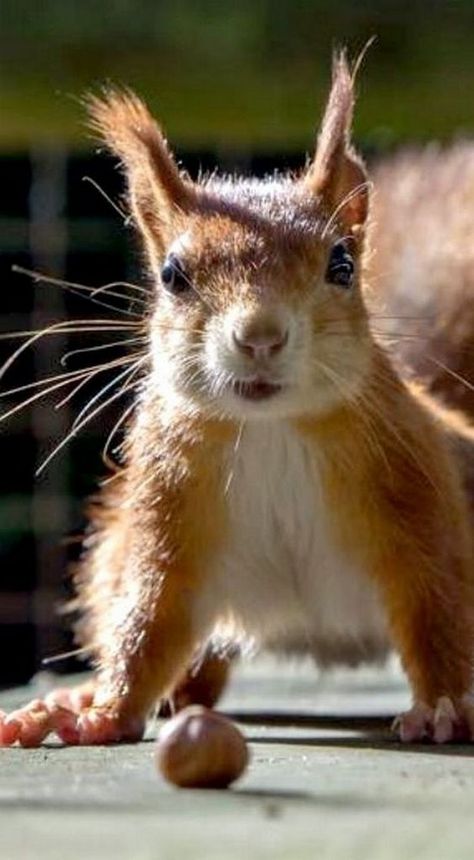 And baby squirrels are just adorable. If you hear a high-pitched squeaking sound coming from the ground, look around. You might have found a baby squirrel. If you do see one without its mother around and it is in need of assistance, you may be the only person who can save it, but that should be your last resort. Primarily you should leave it alone, and wait for its mother to care for it. If that isn't an option, the second best action is to find a wildlife rehabilitator to care for the squirrel until it can care for itself - more on that later. Only when the first two actions are unavailable should you consider trying to care for the baby yourself. In that situation I hope this guide serves and a sound basis for your journey.
And baby squirrels are just adorable. If you hear a high-pitched squeaking sound coming from the ground, look around. You might have found a baby squirrel. If you do see one without its mother around and it is in need of assistance, you may be the only person who can save it, but that should be your last resort. Primarily you should leave it alone, and wait for its mother to care for it. If that isn't an option, the second best action is to find a wildlife rehabilitator to care for the squirrel until it can care for itself - more on that later. Only when the first two actions are unavailable should you consider trying to care for the baby yourself. In that situation I hope this guide serves and a sound basis for your journey.
Did you know? A baby squirrel can't take care of itself until it is 12 weeks old!
What Species is the Squirrel?
The two most common species of squirrel that you'll find in the US are Eastern Greys and American Red squirrels. As the names suggest, you can tell them apart by their coloring.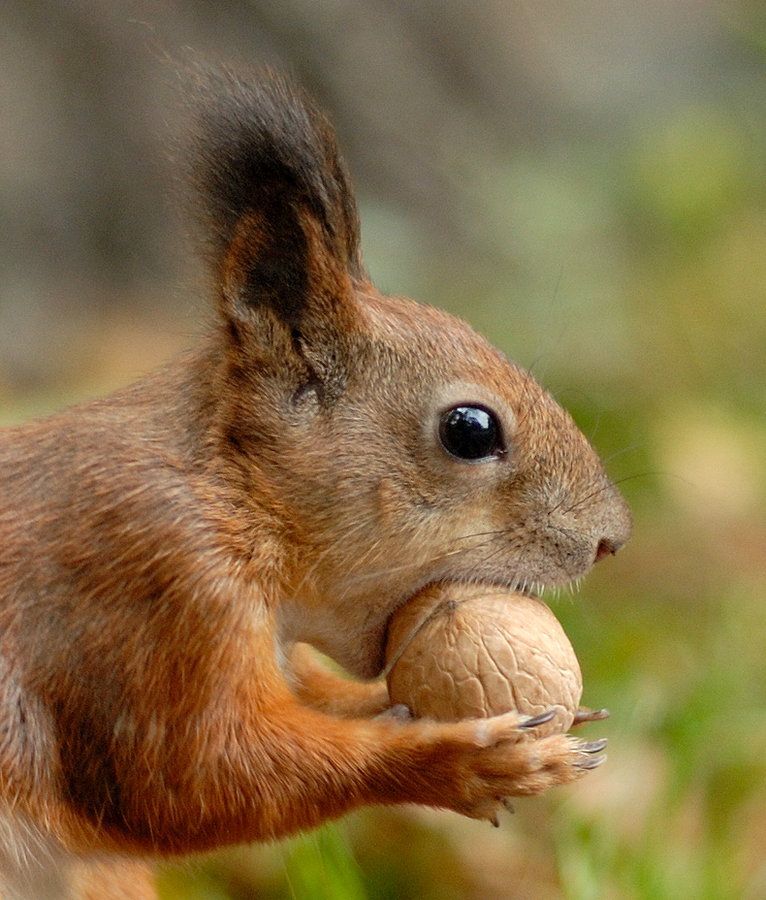 Eastern Greys can be black, gray, or brown with golden hues. They are mostly seen in the eastern US and Canada.
Eastern Greys can be black, gray, or brown with golden hues. They are mostly seen in the eastern US and Canada.
American Red squirrels have a reddish-brown hue on their head and back but a white undercoat. They are also smaller than greys. You can see red squirrels east to west, north to south throughout North America.
Both species develop at about the same rate, and you can care for either species in the same manner.
Identify the Baby Squirrel's Age
Unlike other animals at birth, baby squirrels can't do anything on their own. They require intense care as they develop. You can estimate how old the baby squirrel is by matching its appearance and behavior to these descriptions.
- Newborn to 1 week: pink body, no fur, eyes closed, body measures about three inches long (not including the tail), American red squirrels will have a dark stripe down the middle of their snout
- 2 weeks: fur starting to develop on the back but not on the underside, eyes still closed
- 3 weeks: has grown to about 4 inches long (excluding tail), front lower teeth are coming in, eyes still closed
- 4 weeks: body is approximately 5 inches long, fur growing on the underside, eyes open
- 5 weeks: 6 inches long, top front teeth coming in
- 6 weeks: develops back (cheek) teeth, can sit up on its own and hold food in its front paws
- 7-8 weeks: 7-8 inches long, fur has fully grown in, becoming more active
- 8-12 weeks: learning to climb, still smaller than adult squirrels, can be released outdoors if healthy
Baby squirrels need care for about three months. After that, you can continue supporting them by releasing them outside and filling a squirrel feeder for them to use. Place it in an easy-to-reach, easy-to-see location. Providing a squirrel feeder will ensure that they are getting enough nutrition as they learn to forage for their food supply.
After that, you can continue supporting them by releasing them outside and filling a squirrel feeder for them to use. Place it in an easy-to-reach, easy-to-see location. Providing a squirrel feeder will ensure that they are getting enough nutrition as they learn to forage for their food supply.
How do You Know if a Baby Squirrel is an Orphan?
You might find a baby squirrel alone and feel the need to care for it. Just be sure that the mother is no longer able to care for it herself.
If the baby squirrel is injured or looks dehydrated or malnourished, take it. If it is hurt, the mother will not be able to heal it. Depending on the severity of the injury, you or even a veterinarian might not be able to save it, but human care will be more effective than the little that the mother squirrel can do. If your pet dog, cat, or another predator carried it away from its home, the mother might not be able to find it again anyway.
If it is dehydrated or starving, you can tell that the mother has not been able to care for it.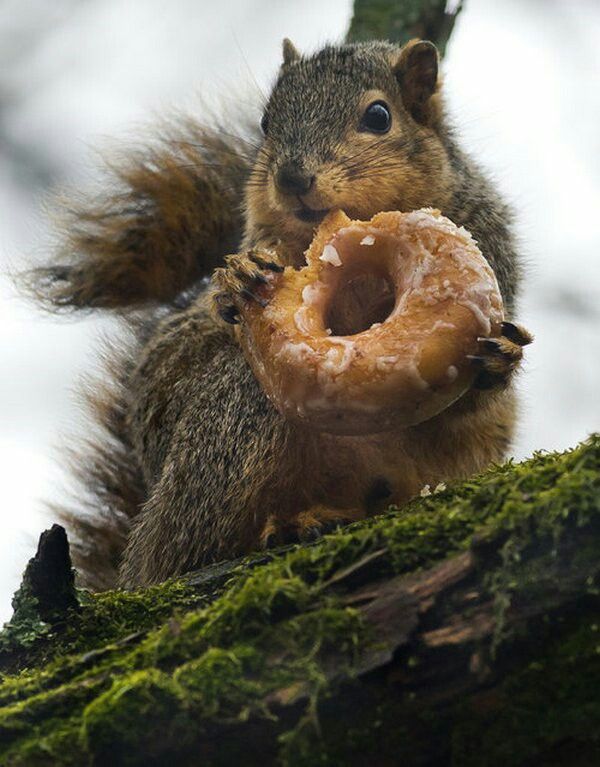 She might have been trapped and removed in another yard, killed by a predator, or died from falling or natural causes.
She might have been trapped and removed in another yard, killed by a predator, or died from falling or natural causes.
If, however, the baby appears healthy, leave it where it is until dark. Monitor it from afar as much as you can to keep it safe, but allow time for the mother to return to it. She might be watching you to make sure it's safe for her to return. She might be creating a new nest and need time to finish it before carrying the baby to its new home. She might be in the process of moving the rest of the litter to the nest and will eventually come back for this one. Finally, if the baby fell from the nest due to high winds or a predator attempting to carry it off, it might take her some time to find it and carry it back to safety.
Did you know? A squirrels teeth never stop growing! They have to gnaw and chew on things to keep their teeth from getting too large.
You can help keep the baby squirrel warm by creating a make-shift nest around it. Place bottles full of warm water under a blanket, towel, or old clothing. Surround the baby with warmth, but do not cover it. Placing the baby in a box, even with the lid open, or covering it with cloth, can make it harder for the mother to see. It also might make her more wary of approaching your setup. You can pick up the baby to position it more comfortably and securely in the nest. Unlike, birds, squirrels will not be bothered by the smell of human oils on their babies. They will shy away from the baby if they are chilled, so keeping them warm is the best you can do for them at this point.
Surround the baby with warmth, but do not cover it. Placing the baby in a box, even with the lid open, or covering it with cloth, can make it harder for the mother to see. It also might make her more wary of approaching your setup. You can pick up the baby to position it more comfortably and securely in the nest. Unlike, birds, squirrels will not be bothered by the smell of human oils on their babies. They will shy away from the baby if they are chilled, so keeping them warm is the best you can do for them at this point.
If you notice the likely mother come to the baby but then leave again, don't be discouraged. She knows where the baby is, has checked on its health, and has likely gone to forage for food or secure a new nest.
Squirrels are only active during the day, so if the mother has not returned by dark, you can assume that she isn't able to. If she could, she would have. She would not leave the baby on its own, even if a new nest were not ready to receive it. She would come back to check on and feed it at the very least.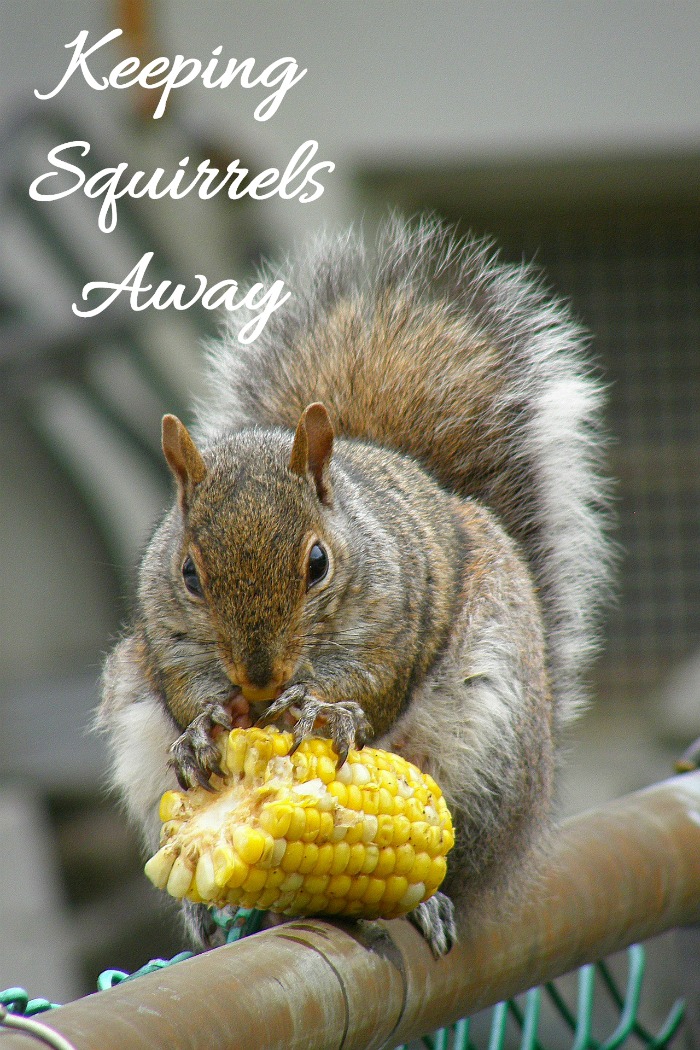
Correcting Human Disruptions
Before we move on to adopting and caring for the orphan you found, you might be able to reunite it with its mother by changing or reversing some human behaviors. Construction and landscape projects often disrupt animal habitats. There's nothing wrong with maintaining your property, but you might find a litter of baby squirrels separated from their mother when you do so.
Where did you find the baby squirrel? Was it near a tree you recently cut down? Was it under the porch where you recently applied a new lattice? Was it on your roof?
Squirrels do not always create nests in trees . They will burrow or find a warm corner. Nestling up against a house under a dark porch is quite cozy for a squirrel. A leafy gutter also makes a soft bed. If you've recently cleaned out your gutters or closed off an area with new fencing, consider reversing your steps for a time. Make a temporary leaf nest in the gutter and give the mother time to reclaim her young. Open the fence or latticework. If you cut down a tree, don't chop the wood or remove the brush right away. The mother will see that her chosen location is no longer suitable and will make a new nest elsewhere. Once she's moved the babies to a new home, you can continue with your project.
Open the fence or latticework. If you cut down a tree, don't chop the wood or remove the brush right away. The mother will see that her chosen location is no longer suitable and will make a new nest elsewhere. Once she's moved the babies to a new home, you can continue with your project.
Adopting a Baby Squirrel for Care
Being afraid of humans is a partly instinctual, partly learned behavior for squirrels. Baby squirrels who can walk but are alone, will often overcome their fear and approach humans. They've even been known to follow people home or climb up a person's leg. It's an interesting, immensely heartwarming phenomenon, but it also shows how desperate the baby is. If they are willing to approach you for possible help, they have apparently been left alone for some time. Although mobile at six weeks old, a squirrel relies upon and stays with its mother until it is about 12 weeks old.
Younger babies cannot even begin to walk or gather food for themselves. Most of the time, the babies that you find will be newborns who haven't yet opened their eyes. Baby squirrels are docile enough that there is little danger of them biting you. They will generally accept you picking them up, handling them, and feeding them. If you have the time, caring for a baby squirrel can be an exceedingly rewarding experience.
Most of the time, the babies that you find will be newborns who haven't yet opened their eyes. Baby squirrels are docile enough that there is little danger of them biting you. They will generally accept you picking them up, handling them, and feeding them. If you have the time, caring for a baby squirrel can be an exceedingly rewarding experience.
Initial Care: Checking for Injuries and Bathing
The first step is to check the baby squirrel for injuries.
1. Using a soft cloth, gently pick up the baby and carry it indoors to a well-lit room with a sink. You can also fill a bucket or large basin with warm water if you don't want to take it inside or into the central living area of the house.
2. Caress the baby's face. It should move its head from side to side. If it doesn't, the baby might have a broken neck or spinal injury.
3. Gently squeeze each paw and the tail. Watch how the baby reacts. It should pull away from the pressure. If it doesn't, or if the movement seems unnatural, it might have a broken leg or tail.
If it doesn't, or if the movement seems unnatural, it might have a broken leg or tail.
4. Next, mix some dish soap in warm water and bathe the baby. Use a soft washcloth to clean any cuts and brush away debris or parasites. Be sure to wash the nose and face. Clear the nostrils for natural breathing. Using a soft, wet cloth simulates a mother's tongue grooming the baby.
5. Lastly, use a Q-tip to stimulate the baby squirrel's genital area and anus. Doing so is often necessary for baby animals to release waste and would be a regular part of a mother's care. It might take a couple of minutes' worth of stimulation before the baby pees. You will need to keep stimulating the area until it is finished to ensure the baby empties its bladder.
If a male squirrel does not start urinating at least a little amount within a couple of minutes, check for a swollen penis. Baby squirrels suck on any nipple-like appendage and can sometimes cause a brother's penis to swell and scab over. If this is the case, soak the lower part of the squirrel's body in warm water for about 20 minutes to soften the scab. You can then wipe the scab off with the washcloth and allow it to release its urine.
If this is the case, soak the lower part of the squirrel's body in warm water for about 20 minutes to soften the scab. You can then wipe the scab off with the washcloth and allow it to release its urine.
If the baby has been alone for a significant amount of time, the urine might be more brown than clear, showing its degree of dehydration.
If you suspect broken bones, find deep lacerations, or unable to stimulate urination, call a veterinarian for help. Some vet offices see small rodents. Others can direct you to a wildlife specialist who might be able to help. If your cat caught the squirrel, it would need antibiotics to fight off infections received from the cat. Just as a cat scratch or bite can irritate your skin, feline germs and bacteria can be toxic to small animals.
Secondary Care: Warming
The warm bath will have helped heat the baby up. It will drop again, though, as it dries. To keep the baby's core temperature up, place it in a box with a blanket bed. Cover the baby, even its head, and put the box on a heating pad or next to a heater. Check on the baby every 15 minutes. If you found more than one baby squirrel, place them next to each other for comfort and to share body heat. The presence of a littermate will help the squirrel feel safe and relaxed.
Cover the baby, even its head, and put the box on a heating pad or next to a heater. Check on the baby every 15 minutes. If you found more than one baby squirrel, place them next to each other for comfort and to share body heat. The presence of a littermate will help the squirrel feel safe and relaxed.
You can also hold the baby squirrel cupped between your hands or let it snuggle against your body for warmth.
Rehydrating
Rehydration is often more important than food during the first day of care. You can use Pedialyte or mix half a teaspoon of salt and half a teaspoon of sugar in two cups of water and feed it to the squirrel with a feeding syringe. Pedialyte is more efficient than the water mixture, so if you can pick some up at the store, do so. Look for the unflavored variety, but if you can't find it, squirrels will generally drink the flavored mixes as well.
A feeding syringe does not have a needle, but an open, cone-shaped top. It is often used to administer oral liquid medications to animals.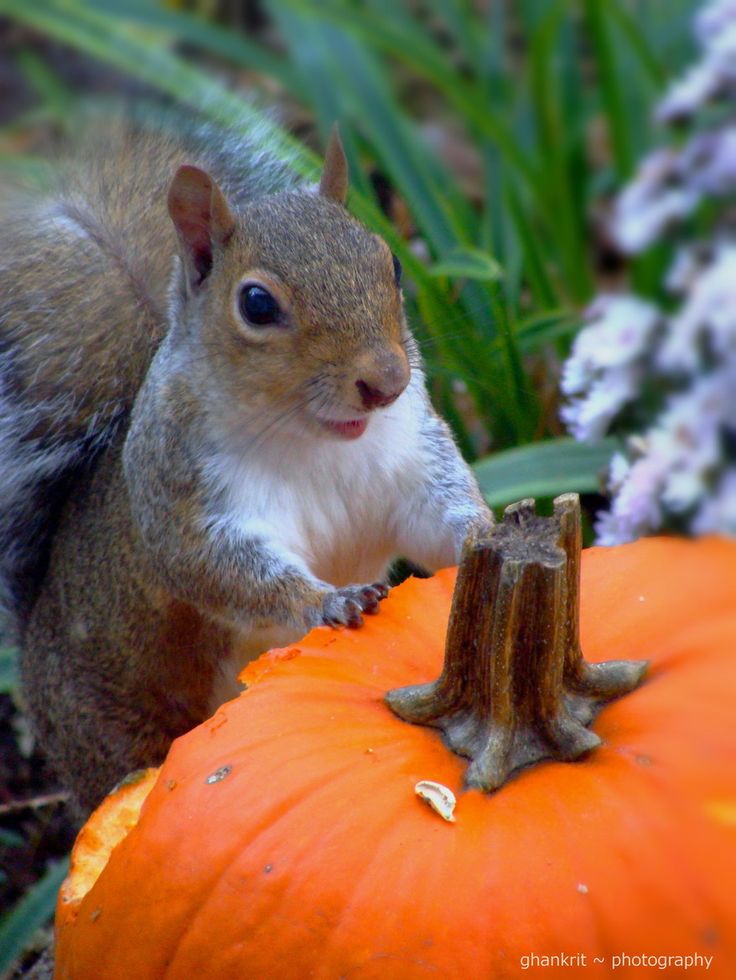 You can dip the top into the liquid, pull back on the plunger to fill the vial, and then press the plunger forward to drop or squirt the liquid into the squirrel's mouth.
You can dip the top into the liquid, pull back on the plunger to fill the vial, and then press the plunger forward to drop or squirt the liquid into the squirrel's mouth.
To help the squirrel drink, place it upright in a sitting or position or as if it were standing on its hind legs. You can do this by mounting a blanket or towel around it or holding it in your hand. You don't want to give it liquid lying on its back as it might choke. If the baby squirrel is particularly wiggly, you might need to hold it to keep it still. It might also be helpful to use cotton gloves when handling the squirrel and to avoid washing them unless they become soiled with waste material. The gloves will absorb the squirrel's scent and help it to feel safe and calm.
Administer the liquid slowly. A squirrel that drinks too fast can choke and allow fluid to enter its nasal passages. If the liquid starts coming out of its nose, turn it upside down to let the liquid to drain out entirely through the nose rather than flowing down into its lungs.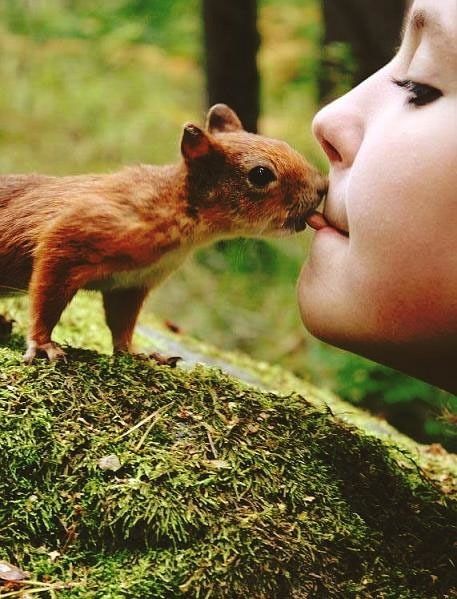
You'll want to go slowly at first as the baby squirrel might be too weak to swallow much at a time. It might also be too small to drink very much during one sitting, so continue to offer the liquid about every half hour. After every drinking period or at least once per hour, re-stimulate the squirrel's genitals. When the urine appears light yellow or clear, you can move on to more nutritious foods.
Clean the baby's face and neck with a wet, warm cloth after every drinking period as the salt and sugar water can leave a sticky residue.
What if the Squirrel Won't Drink?
Most animals need to feel safe and comfortable before they can turn their attention to eating or drinking. It's part of their survival instinct. Be safe first; then eat when they can. If your baby squirrel doesn't seem to want to drink, try the following.
- Hold the squirrel upright in hand towel to keep it warm.
- Stimulate its genitals with a wet, warm cloth to see if it needs to urinate before taking more liquid.
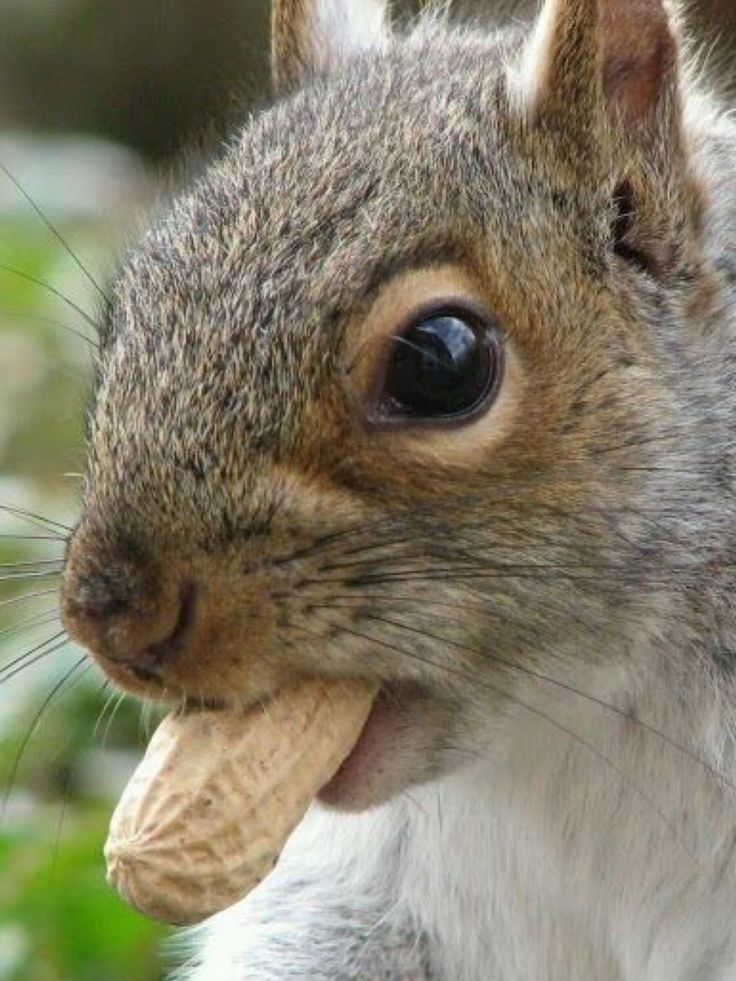
- Make sure you are in a quiet environment.
- Dim the lights to simulate a dark and hidden nest.
- Hold it close to your face and whisper to it so that it gets used to your scent and learns that you're not a danger.
- Warm the Pedialyte or salt and sugar water to room temperature.
- Stay calm and patient. Don't try rush or the squirrel will sense your unease.
Once you establish the right mood and bond with the baby squirrel, it will usually take liquid from you without hesitation.
What to Feed a Baby Squirrel
If the baby squirrel has done well with the syringe, you can graduate to a feeding bottle with elongated nipples. You might need to poke holes in these nipples. To do so, just pierce the nipple with a needle or toothpick and then boil the nipple with the needle or toothpick still in the hole. Remove the nipple from the boiling water, let it cool, and then remove the piercing instrument. The hole will be permanently formed.
Adult squirrels aren't too discerning about what they'll eat , but a baby squirrel's digestive system is sensitive. Feeding a baby squirrel the wrong thing could cause diarrhea and dehydration or, worse, send their body into shock. Never feed them human formula, cow's milk, or milk substitutes. If you aren't sure on what baby squirrels eat, the best feeding solution you can buy is puppy milk. Esbilac and similar products are available at veterinary offices and pet food stores. Look for the powdered version and then slowly introduce the solution to the baby squirrel's system in the following stages.
- 1. Mix one part powdered puppy milk in three parts Pedialyte or salt and sugar water.
- 2. Mix two parts puppy milk in two parts liquid.
- 3. Increase to three parts puppy milk to one part rehydration solution.
- 4. Continue with undiluted puppy milk.
Stay at each stage for two feedings and offer the solution every two and a half hours.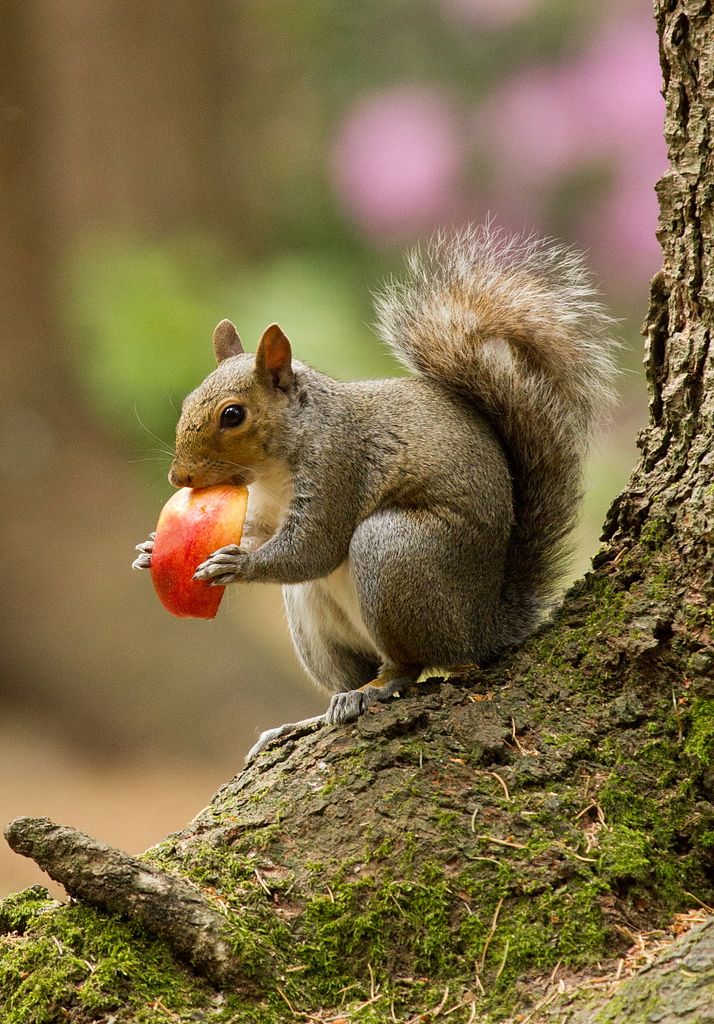 It would be helpful to wake up once during the night to provide the baby squirrel an additional feeding time. Be sure to follow the directions on the puppy milk packaging so that powder fully dissolves. Warm your mixture to room temperature to make it palatable to the baby squirrel and to avoid chilling it.
It would be helpful to wake up once during the night to provide the baby squirrel an additional feeding time. Be sure to follow the directions on the puppy milk packaging so that powder fully dissolves. Warm your mixture to room temperature to make it palatable to the baby squirrel and to avoid chilling it.
The amount that you should feed a baby squirrel during each period will depend on its age and species. Keep in mind that a malnourished squirrel will probably not be able to take a full feeding until it regains its strength.
- Newborns to 1 week: Eastern greys .75cc-1.25cc every 2.5 hours / American reds .5cc every 2.5 hours
- 2 weeks: Greys 2.5-3cc every 3 hours / Reds 1-1.5cc every 3 hours
- 3 weeks: Greys 4-5.5cc every 3 hours / Reds 1.75-2cc every 3 hours
- 4 weeks: Greys 6-9cc every 3.5 hours / Reds 2-2.5cc every 3.
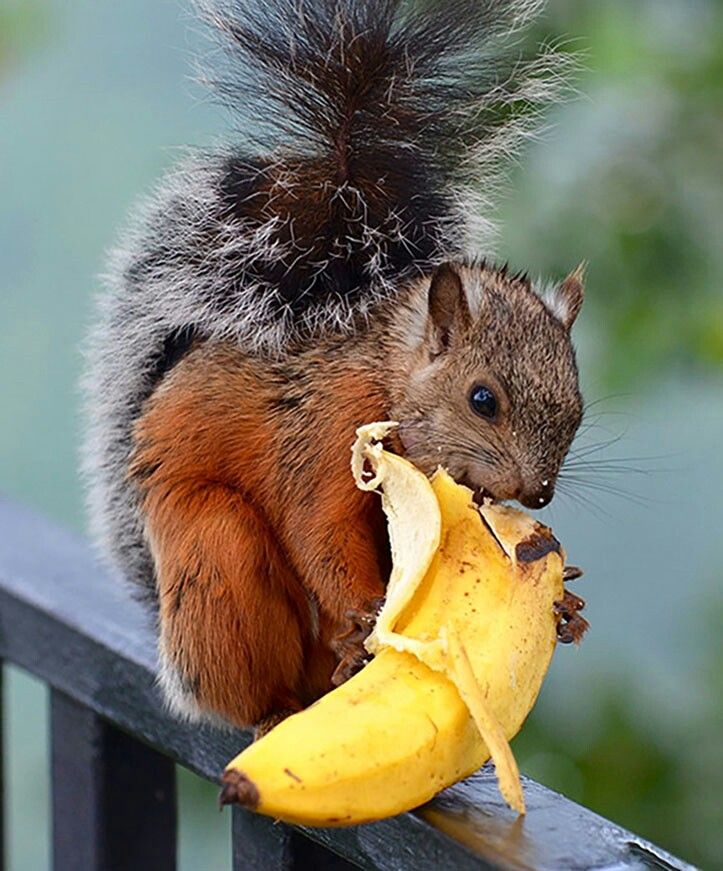 5 hours
5 hours - 5 weeks: Greys 10-12cc every 4 hours / Reds 3-4cc every 4 hours
- 6 weeks: Greys 12-14cc every 4 hours / Reds 4-6 cc every 4 hours
- 7 weeks: Greys 14-16cc every 8 hours / Reds 7-8 cc every 8 hours
- 8-12 weeks: Greys 16-18cc every 12 hours / Reds 9-10 cc every 12 hours
Remember that American red squirrels are smaller than Eastern greys and so will need much less food. You will also need to continue stimulating urination and washing the face and neck after each feeding.
Judging Digestive Health
Pay attention to the baby squirrel's stool. When it is dehydrated, the stool might be dark brown or black and will often be quite loose. After it begins digesting the puppy milk, it should turn to yellowish-brown pellets. If the stool appears very pale, add plain water to the mixture to dilute the milk solution.
If the baby's stomach seems bloated, soak its lower body in warm water for half an hour and massage its abdomen. Skip a feeding period and administer only Pedialyte or salt and sugar water. If the bloating does not dissipate within 24 hours, call a veterinarian or wildlife specialist to check for parasites.
Contact Your Local Wildlife Service
After you have done your best to clean, warm, feed, and treat injuries, the next best step is to call your local wildlife authority. Park services often have nature centers where they can house and rehabilitate injured or orphaned animals. The staff and volunteers of a nature center will have the time and resources to best care for your orphaned squirrel. You would also be free to visit and check up on the little one's progress. And a wildlife shelter might already have another baby squirrel with which they can socialize your rescue.
Guidelines for Ongoing Care
If you are committed to caring for the baby squirrel yourself, here are a few essential guidelines to follow.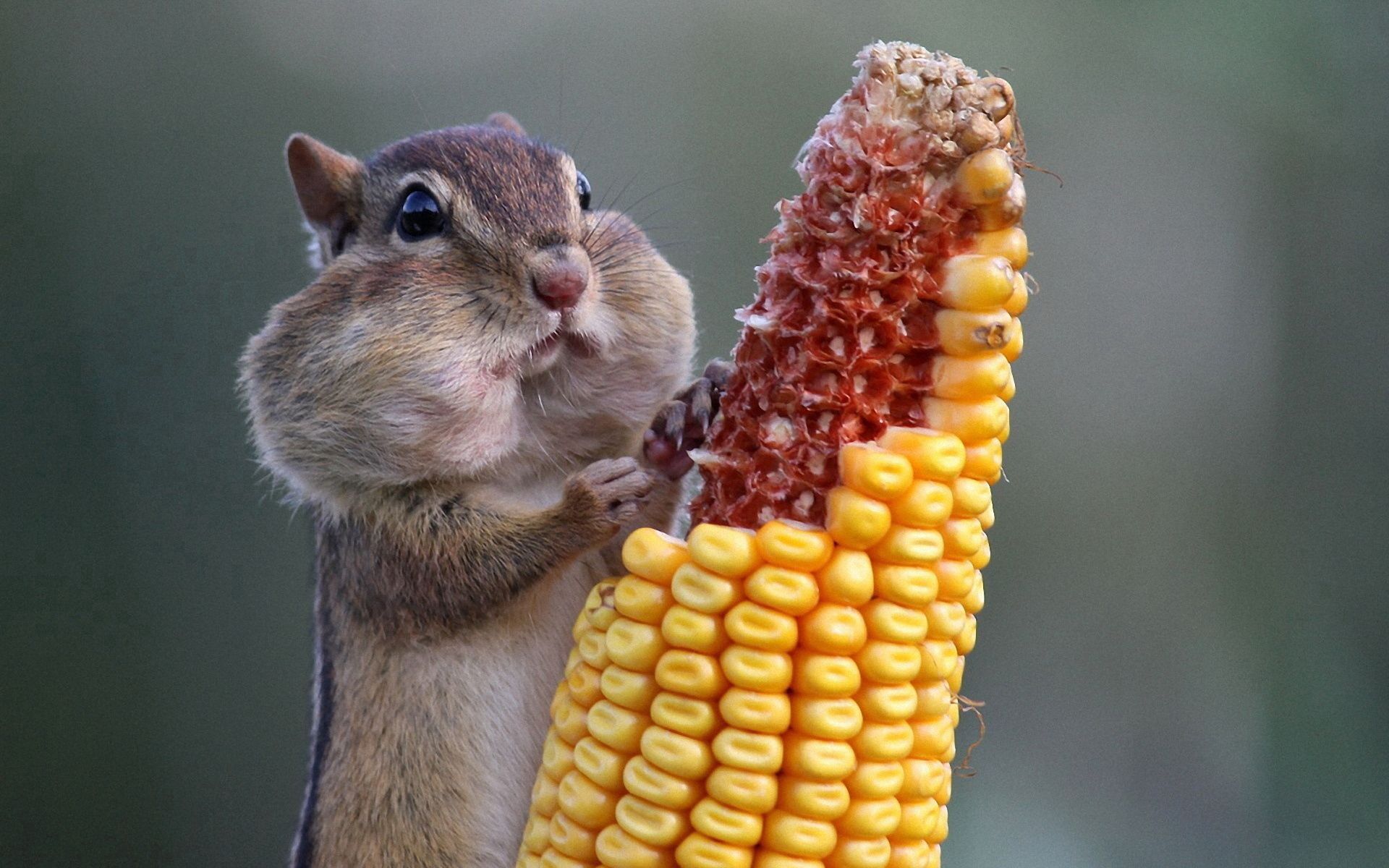
1. A squirrel is not a pet. You should not approach caring for a baby squirrel expecting it to become a permanent pet. Once it is mobile, it will be mobile. It will either tear around your house like it does the trees outside or it will be miserable while confined to a cage. Without enough area to expend energy, a caged squirrel will become violent. Even raised from birth, a squirrel cannot be domesticated. It is not an indoor animal.
2. A squirrel should be socialized with other squirrels. If you found one orphaned squirrel, there's a chance that the rest of the litter is nearby. Do your best to walk your yard for a couple of days, listening for little squeaks. Raising the squirrel with others will help it learn how to play and behave appropriately. They will watch each other and pick up new skills.
3. A squirrel should not socialize with other pets or people. For the sake of its outdoor survival, a squirrel needs a healthy fear of people and other animals. You will need to feed, bathe, and play with it to help it develop, but do not let others do so. It will recognize you as its “mother” while retaining its cautious attitude toward people who are not you. Keep it in a room by itself so that other people are not likely to pass its cage. Do not let it become familiar and friendly with your dog or cat. If they have a positive relationship with your pet, they might not know to run when they encounter another of the same species outside.
You will need to feed, bathe, and play with it to help it develop, but do not let others do so. It will recognize you as its “mother” while retaining its cautious attitude toward people who are not you. Keep it in a room by itself so that other people are not likely to pass its cage. Do not let it become familiar and friendly with your dog or cat. If they have a positive relationship with your pet, they might not know to run when they encounter another of the same species outside.
Continued Feeding
You can continue with the puppy milk according to the age and breed guidelines above, but consider thickening it with whipping cream or plain yogurt to add fat content. If the baby squirrel is very young or if you intend to nurse more baby squirrels, you can order specially made squirrel milk from Fox Valley Animal Nutrition. Some pet stores will carry their products, but they are more of a specialty item, not in demand on most shelves.
It will be tempting to give the squirrel as much milk as it wants, but be careful to follow the guideline.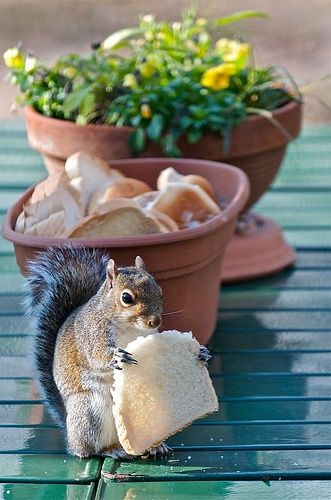 Some animals do not know their limits and will overheat, giving themselves bloated stomachs, diarrhea, or other digestive issues.
Some animals do not know their limits and will overheat, giving themselves bloated stomachs, diarrhea, or other digestive issues.
Once they are doing well and have reached a certain age, you can also introduce solid food into their diet. You do not need to regulate solid food once the squirrel is doing well. Allow it to eat as much as it wants.
- At three weeks, you can provide rat and mice rodent block for them to chew on.
- At six weeks, add unsalted sunflower seeds and raw fruit, such as apple slices, grapes, and banana.
Creating a Habitat
The “nest” that you make for your squirrel will need to change as it grows.
Stage 1: At first, a baby squirrel isn't very mobile so that a small box will do just fine. Lay blankets or old towels in the bottom of the box and place it in a dark, quiet room over a heating pad or next to a heater. Poke holes in the box for air circulation and close the lid. Recover the baby squirrel after every feeding or handling time.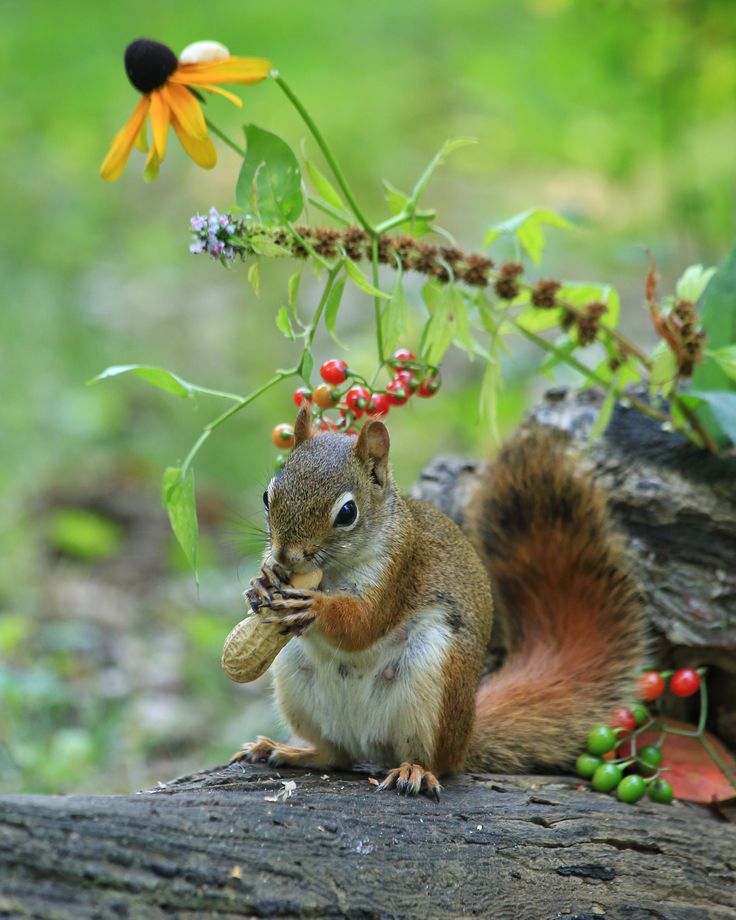
Make sure that the cloth does not have loose strings or holes in which the baby squirrel could get caught. Wash or change the materials once a day with unscented detergent. Do not use dryer sheets or other scented additives. It's best to let the squirrel's scent permeate the fabric so that it feels safe without distracting smells. Strong odors can also irritate a baby squirrel's sinuses and lungs.
Do not use woodchips like you would in other rodent habitats. The chips will be too rough the baby squirrel's skin, too aromatic for its lungs, and will not provide enough insulation to keep it warm. You can move to woodchips in Stage 3.
When the baby is about three weeks old, they will start developing their lower front teeth. To help them teethe and to begin introducing solid food into their diet, place a few pieces of rodent block in their box. It is a small pellet-shaped food that will provide all the nutrition the squirrel needs. Choose rodent block made for mice and rats rather than hamsters and gerbils to match the squirrel's needs more closely.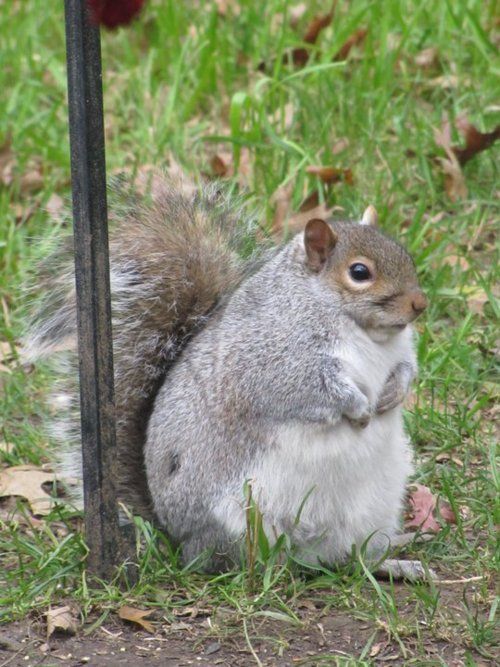
Stage 2: When the baby reaches five weeks and its eyes open, it will want to be more mobile. Move it to a larger box, dog carrier, or rodent cage. If the holes in the pet carrier or cage are large enough for the squirrel to squeeze through, cover the panels with a smaller material, such as bird netting, chicken wire, or old window screens.
Add a hanging water bottle to the side of the habitat and give the squirrel a mineral stone for small mammals. The mineral stone is a salty treat they will lick to gain essential minerals, such as calcium and iron.
Stage 3: At eight weeks old, the baby squirrel is very energetic and nearly ready to be released. It will need a large cage. With sturdy wiring that it can't chew through. A large dog crate is the minimum size you will want at this stage.
Lay a tarp under the cage and fill the bottom with cloths or woodchips. Keep in mind that you will still need to change this bedding out every day. You'll also want to add climbing materials, such as tree branches or hanging dowel rods. You can push dowel rods through the holes of the cage and secure them in place by tying the ends together or placing nuts and washers on the ends. You can create a hanging or pedestal nesting box to simulate how they will live outdoors.
You'll also want to add climbing materials, such as tree branches or hanging dowel rods. You can push dowel rods through the holes of the cage and secure them in place by tying the ends together or placing nuts and washers on the ends. You can create a hanging or pedestal nesting box to simulate how they will live outdoors.
Place this cage outside or in an open garage for at least a few hours per day to help them acclimate to outdoor life. Bring them back inside or close the garage at dusk to keep them safe from lurking predators. Continue this pattern for three to four weeks.
Playtime
As with human children, play is learning. You will need to handle, stimulate, cuddle, and play with the baby squirrel to help it learn how to use its muscles. You will also want to place plenty of “toys” in its box or cage. Squirrels are not picky. They will explore and play with anything, but for their own good, include natural items. Once they have fur as physical protection against abrasions, you can place sticks, bark, woodchips, leaves, nuts, pinecones, grass clippings, sod, dirt, or feathers in the box.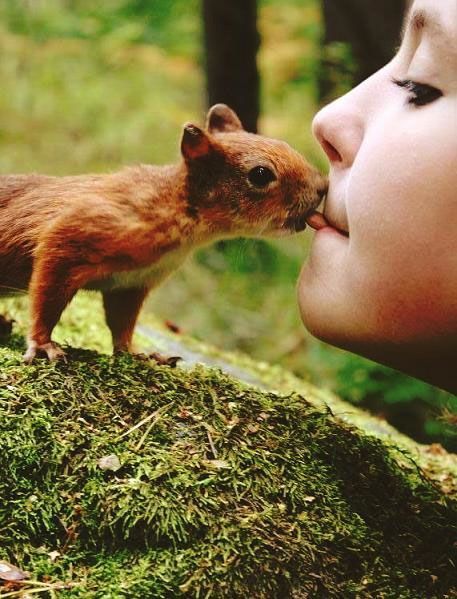 When you release them back outside, they will be familiar with these natural items.
When you release them back outside, they will be familiar with these natural items.
Release
At 12 weeks old, your healthy baby squirrel is ready to be released outside. Take the nesting box that you made and nail it in the crook of a tree. Try to do this when it is warm and dry for a couple of days so that you can stock the box with towels for the squirrel to hide or nestle in.
Bring the cage outside and set it door-open next to the tree. Back away and wait for the squirrel to come out. Some squirrels are more adventurous, some more cautious. Eventually, they will leave the cage and, most likely, climb the tree. They will see their nest box and know that they can use it as their new home. Remove the cage and continue monitoring their explorations.
You will want to fill a food and water bowl some distance from their nesting tree. Doing so will ensure that other animals attracted to the food are not immediately made aware of the nesting box as well. You can also use a squirrel feeder to ensure it is getting enough nutrition.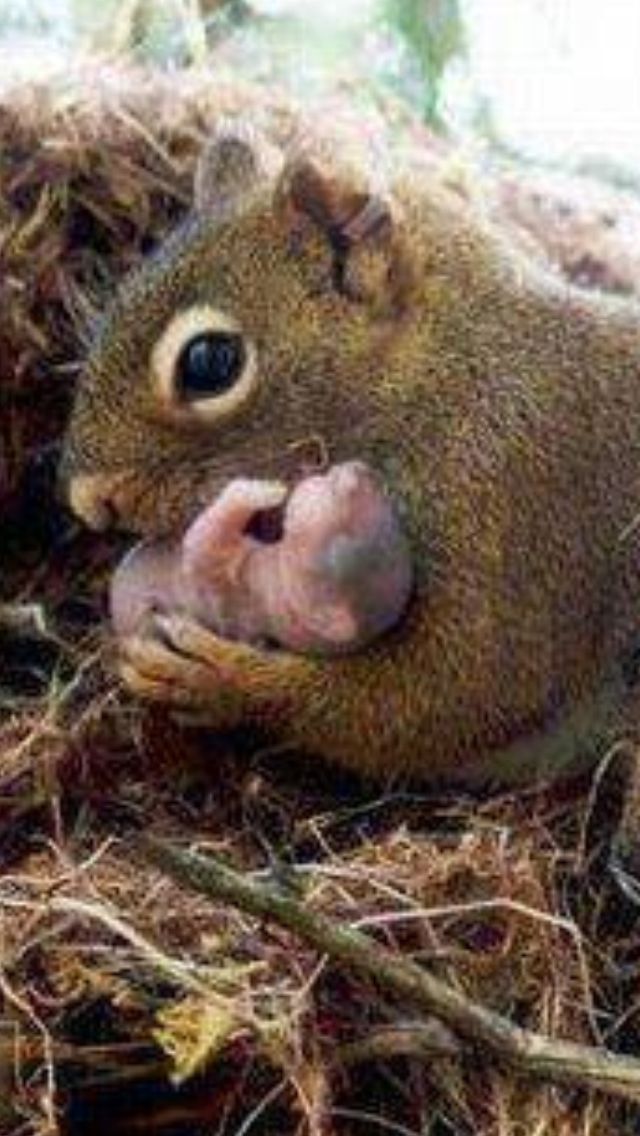
You'll eventually lose track of your squirrel friend, but don't be surprised if it comes to visit you out in the yard once in a while. If it spent three or more weeks with you, it will remember you and know that you are someone to be trusted.
Baby Squirrel Facts
Here is a quick summary of what you've read for easy reference.
- Baby squirrels make a high-pitched squeaking noise.
- Eastern grey squirrels are black, gray, or brown.
- American red squirrels are reddish-brown with a black stripe on their nose.
- Baby squirrels need to be taken care of until they are 12 weeks old.
- They are pink and bald at first.
- Baby squirrels need Pedialyte and puppy milk to grow.
- You can feed a baby squirrel with a bottle and it will bond to you as its “mother.”
- You have to keep baby squirrels warm and massage their genitals to make them pee.
- At three weeks, they start developing teeth.
- At four weeks, they open their eyes.
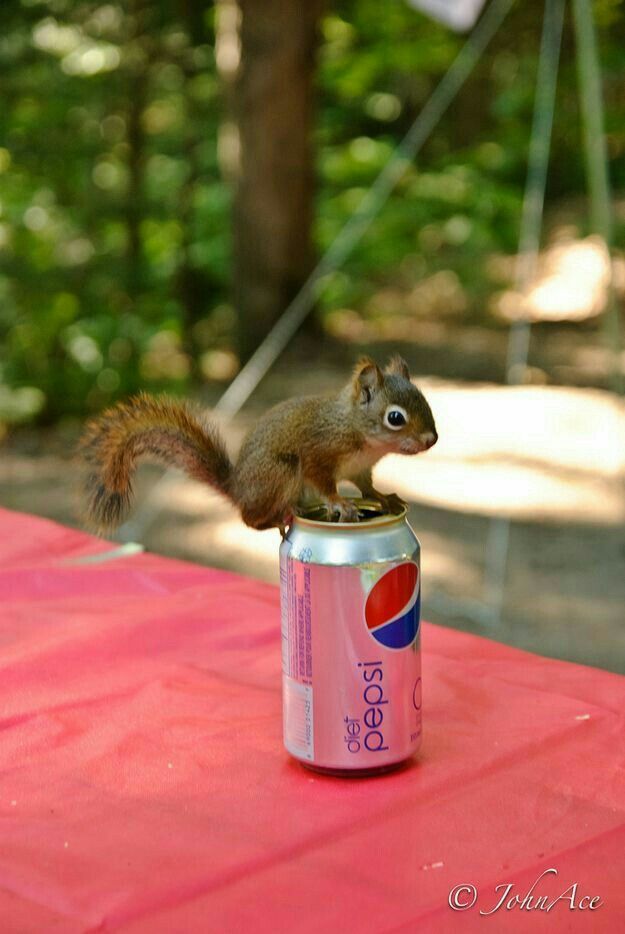
- At six weeks, baby squirrels can eat seeds, nuts, and fruit.
- At eight weeks, they start learning how to climb.
- Even after you release it, a baby squirrel will know and remember you.
Squirrel feeding in natural and artificial conditions
- Authors
- Executives
- Job files
- Award documents
Volkova M.A. 1
1MAOU NOSH No. 43
Zhideleva T.G. 1
The text of the work is placed without images and formulas.
The full version of the work is available in the "Files of the work" tab in PDF format
Introduction.
When we talk about the forest, we are accustomed to imagine a whole world full of life. In it, the high tops of fir trees are decorated with garlands of cones that birds feed on. In the clearing, tiny Christmas trees flaunt apart, in the forest clearings, traces of animals are visible: foxes, white hare, and elk.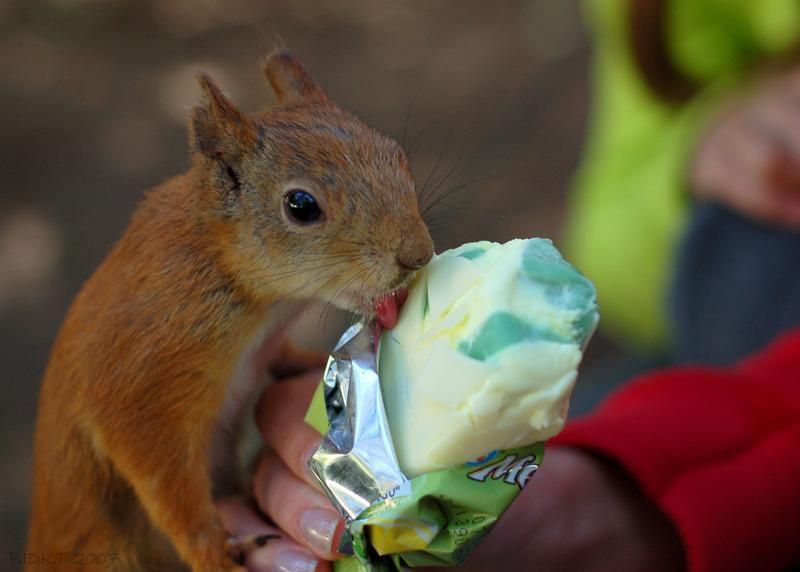 White hares hide under low hanging branches. In dense prickly branches, spruces build their houses - squirrel nests.
White hares hide under low hanging branches. In dense prickly branches, spruces build their houses - squirrel nests.
However, in reality, everything may look completely different. Such an idyll is preserved only where a person did not have time to leave his mark. The inhabitants of forest , as a rule, do not like to catch the eye of guests.
I was lucky, my house is located next to the Fir Mountains forest park area. I do not need to travel far to enjoy the beauties of my native land. Proteins are of particular interest to me.
Relevance: In today's world, rapidly growing cities occupy more and more territories inhabited by various animals (eg, squirrels). This results in starvation and death of animals.
Purpose of the project: to study the conditions and feeding habits of squirrels in captivity and in nature to decide on the need to care for the animal.
Hypothesis: suppose that squirrels in artificially created conditions receive good nutrition, and in natural conditions of the forest park zone they need additional feeding.
To achieve the goal, the following tasks were set :
Study the scientific literature in order to have an idea about the habits and eating habits of the squirrel.
Designate the stages of research and create conditions for their implementation.
Generalization of observations, conclusions.
Making a presentation.
Prepare materials to familiarize classmates with the research topic.
Making recommendations for people who want to feed the squirrel.
Object of study: common squirrel.
Subject of study: the need for additional and proper nutrition of the squirrel.
Place of study: Fir Mountains forest park and petting zoo.
Research methods : study of information sources, consultation of a specialist, observation.
1.1 General information about the protein.
The common squirrel, like other species of this genus, is a typically arboreal animal. She climbs beautifully on branches and easily jumps from one tree to another.
She climbs beautifully on branches and easily jumps from one tree to another.
This is an animal - with an elongated body and a long fluffy tail. Body length is about 22cm (at the age of 21 months) and weight is about 600g.
The life expectancy of an animal in the wild is 7 years, in captivity - more than 10 years. The color of the fur depends on the time of year from silver-gray in winter to bright red in summer, but the tummy of pets is always light white. In winter, the coat is always soft and fluffy. The tail of the animal is very fluffy and long - about 25 cm and helps them maintain balance when moving.
The squirrel does not live long, at the age of three she is already an old woman, the enemies of the squirrel are the goshawk and terrestrial predators: the marten in the European part, the sable in the Asian. Other animals also hunt squirrels, but all these predators do not affect the change in the number of this rodent. The fact is that they hunt for squirrels mainly in years of high numbers of animals, when there are many sick and weak individuals in the population.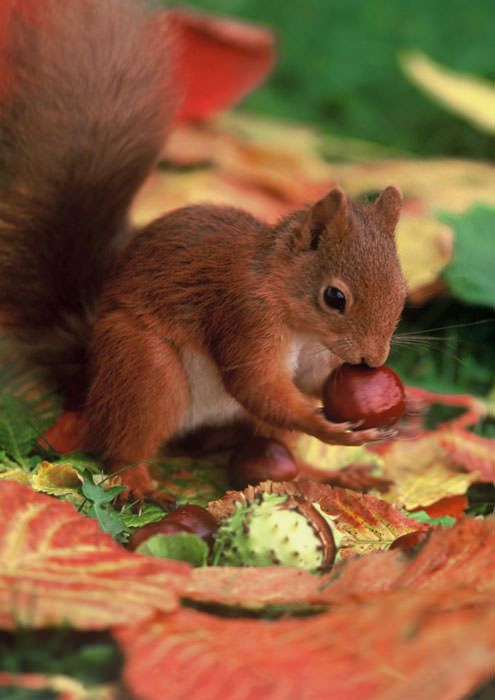 In years of low abundance, the squirrel population consists of healthy animals, which are difficult for predators to catch, and they usually switch to other, more accessible food.
In years of low abundance, the squirrel population consists of healthy animals, which are difficult for predators to catch, and they usually switch to other, more accessible food.
Squirrels - forest barometers . By the behavior of proteins, you can even determine the weather forecast:
• If a squirrel leaves the nest in a severe frost and moves actively, this means that the weather will be fine and the frost will recede.
• If squirrels do not come out of their nests on a sunny winter day, heavy snow is expected, and maybe a snowstorm.
Squirrels are very sensitive to changes in atmospheric pressure, so they catch its fluctuations and prepare in advance for bad weather. When the pressure changes, when the barometer needle starts to creep up, the squirrels come out of the nests.
This animal has been known for a long time. It is not by chance that squirrel fur is among the most valuable: in winter, there are 10,000 hairs per square centimeter of skin on the back, and up to 3,000 on the abdomen. Many species of squirrels are important sources of fur, and their fat is used for technical and medical purposes. The tail is important. From the end hairs of the tail I make high-quality expensive art brushes. Squirrel skins are used to make hats, mittens and slippers.
Many species of squirrels are important sources of fur, and their fat is used for technical and medical purposes. The tail is important. From the end hairs of the tail I make high-quality expensive art brushes. Squirrel skins are used to make hats, mittens and slippers.
Squirrels are hunted not only for their furs. In the tropics, where the skin of squirrels is of no value, they are more persecuted because of the delicious meat.
1.2 Place of residence.
If necessary, the squirrel can jump from the top of a tall tree to the ground without harm to itself. She arranges a nest in hollows or branches of trees. The branch nest is ball-shaped with a side entrance. From the inside, such a nest (gaino) is lined with soft plant material. The number of squirrels depends on the harvest of forest seeds: after a good seed year, the number increases sharply. In starvation, the squirrel switches to feeding on such feeds as birch buds, alders, young shoots and lichens.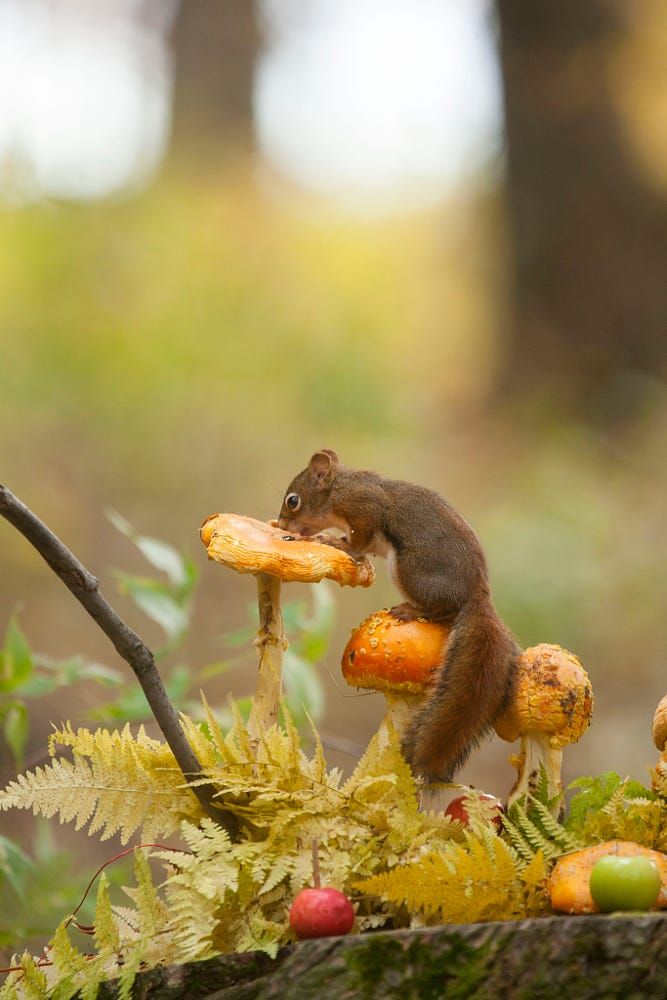 The fatness of the animals in such cases falls sharply, various diseases arise, which leads to the death of a large number of squirrels. In such years, the number of squirrels can be reduced tenfold. Sometimes, in case of crop failure, the squirrel undertakes long-distance migrations. In this case, the bulk of the squirrel goes in one direction, they can be seen in settlements, they swim across rivers in masses. Most of the animals die in this case. With the onset of frost, the migrations end. Thus, due to changes in habitat conditions, the number of squirrels in some years is subject to significant fluctuations. The squirrel perfectly gets used to the person. Within 3 - 4 months they become manageable, take food from their hands, allow them to stroke, play. Squirrel is a very interesting, cheerful animal.
The fatness of the animals in such cases falls sharply, various diseases arise, which leads to the death of a large number of squirrels. In such years, the number of squirrels can be reduced tenfold. Sometimes, in case of crop failure, the squirrel undertakes long-distance migrations. In this case, the bulk of the squirrel goes in one direction, they can be seen in settlements, they swim across rivers in masses. Most of the animals die in this case. With the onset of frost, the migrations end. Thus, due to changes in habitat conditions, the number of squirrels in some years is subject to significant fluctuations. The squirrel perfectly gets used to the person. Within 3 - 4 months they become manageable, take food from their hands, allow them to stroke, play. Squirrel is a very interesting, cheerful animal.
1.3 Culinary habits of the squirrel.
The common squirrel prefers to live near forests dominated by coniferous trees, on which its food largely depends. The main food of the squirrel is the seeds enclosed in the base of the cones. Squirrels also prefer: seeds of coniferous trees, young branches, bark, buds, tree leaves, needles, hazelnuts, acorns, mushrooms, berries and fruits, animal feed, tubers, rhizomes, ground part of herbaceous plants.
The main food of the squirrel is the seeds enclosed in the base of the cones. Squirrels also prefer: seeds of coniferous trees, young branches, bark, buds, tree leaves, needles, hazelnuts, acorns, mushrooms, berries and fruits, animal feed, tubers, rhizomes, ground part of herbaceous plants.
2.1 Preparation for the study and its conditions.
We were looking for a place to conduct the experiment. We came to the place where we saw squirrels in the summer, but what was our surprise when we saw a clearing and a fire pit at this place.
We began to look for a new habitat for squirrels, but the first observations did not give any results, because we did not comply with some conditions.
It turned out that squirrels are sensitive to odors. To continue the experiment, we had to not only air out our clothes on the balcony, but also hang spruce branches next to them.
In addition to us, other visitors to the park also tried to feed the squirrel, while observing this process, we noticed.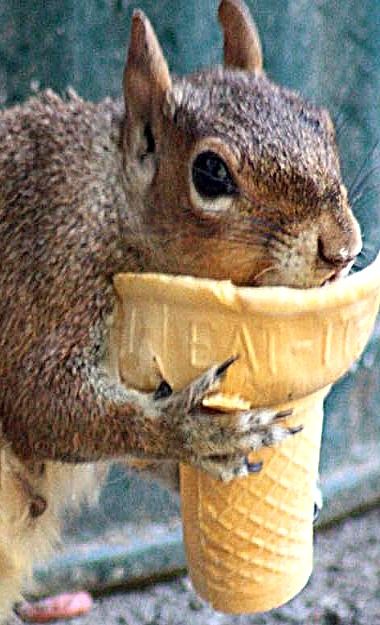 That the kids, who were dressed in bright colors, did not succeed, no matter how quietly they approached. Probably proteins are able to distinguish colors.
That the kids, who were dressed in bright colors, did not succeed, no matter how quietly they approached. Probably proteins are able to distinguish colors.
And the complexity was caused by modern gadgets that scared away the animals with sudden sounds. It was also important to choose treats that could interest the rodents.
2.2 Feed selection.
We took: unsalted and unsweetened crackers, not fried from white bread, low-fat unsalted and unsweetened crackers, dry biscuits, carrot pieces.
2.3 Study in vivo.
Having made all the necessary preparations, we went to the forest. We will make a reservation right away that the place was suggested to us by local residents who often visit our forest. They themselves often go there to feed the squirrels.
For about 30 minutes we stood quietly near the place where we supposedly could meet a squirrel. About 5 minutes after we arrived, the squirrels were already watching us. There were two.
There were two.
We tried not to make sudden movements, only smooth throws of croutons towards the tree, where the squirrels were waiting. But for some reason, one of the squirrels ran away into the depths of the forest.
Another squirrel did not immediately give me the opportunity to approach, but curiosity and hunger forced the animal to approach. I didn't hand-feed him. I knew about the precautions, which I will talk about later. But I poured food next to me, squatted down and waited. As a result, the animal decided to eat, and I was able to examine it.
2.4 Study under artificial conditions.
We also visited the petting zoo. There we also observed the squirrel. She was easy to get in touch with. The zookeeper shared information with us.
As it turned out, squirrels live longer in an artificial environment, their diet expands, and conditions are created for them that mimic the natural environment. It turns out that the diet of squirrels in captivity also includes dry mushrooms, boiled eggs and cottage cheese, once a month they give milk. mushrooms and cabbage every other day, lettuce, cottage cheese, butter, flour worm, fish, grass, branches, cones, needles.
mushrooms and cabbage every other day, lettuce, cottage cheese, butter, flour worm, fish, grass, branches, cones, needles.
According to the zoo worker, the squirrel is a very active animal. They move a lot, love to explore new spaces. If you keep a squirrel at home, then you need to let it out for a walk. On the other hand, it is important to limit access to wires and valuables, to everything that can be tried on the tooth.
If you open the cage and a squirrel suddenly jumps out, don't try to catch the NTO. The squirrel is very dexterous, waste your time. Wait until she gets hungry and comes home on her own.
Like all other creatures, the squirrel has a natural smell. But you don’t need to bathe and comb it, by doing this you will only complicate the life of your pet, exposing him to unnecessary stress.
To maintain cleanliness, you can put a wide cup of water in the aviary, the squirrel will solve the hygiene issue by itself.
Twice a year there is a molt, for this period you can reduce the number of walks so that thick wool does not cover the whole room.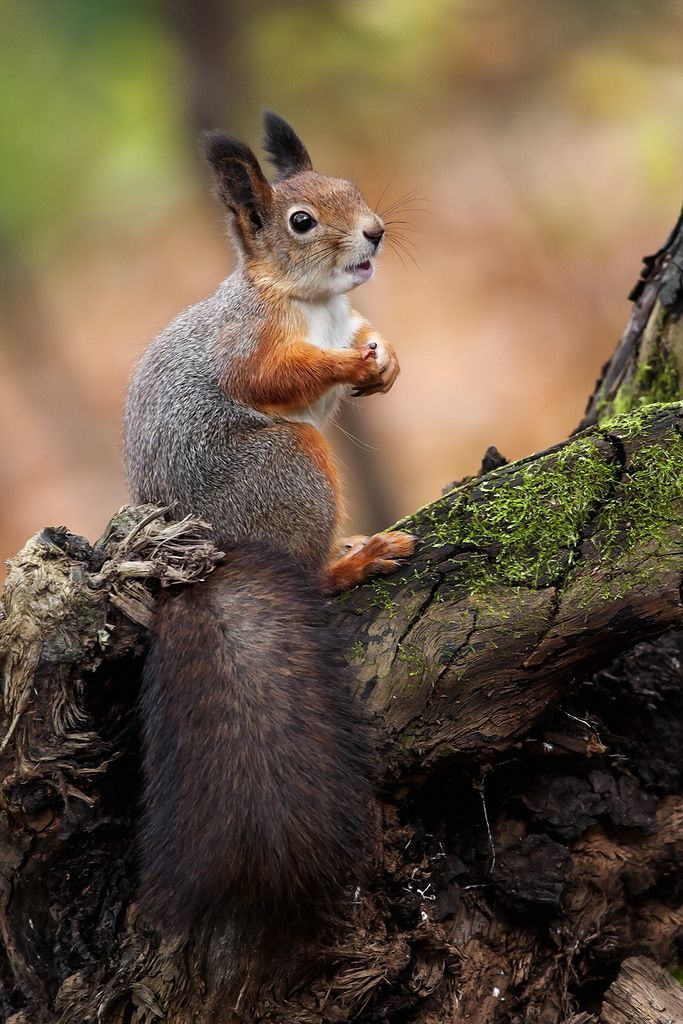 Obeying instincts, the squirrel will hide all uneaten food, stock up for the winter. It is impossible to wean from this, since such behavior is inherent in nature. Therefore, simply limit the amount of food given out, offer exactly as much as he is supposed to for one day. During walks, no food should be freely available to the animal, especially harmful sweets and cookies, which can shorten the life of a squirrel, undermining its health.
Obeying instincts, the squirrel will hide all uneaten food, stock up for the winter. It is impossible to wean from this, since such behavior is inherent in nature. Therefore, simply limit the amount of food given out, offer exactly as much as he is supposed to for one day. During walks, no food should be freely available to the animal, especially harmful sweets and cookies, which can shorten the life of a squirrel, undermining its health.
Pet place equipment.
The first thing to think about: a large and spacious enclosure in which the animal can run and climb the walls (it is desirable that they have a wooden finish). At home, the minimum life expectancy of a squirrel is 6 years, so make sure that the strength of the enclosure is enough with a margin. The minimum size of the cage is 100 x 100 cm and the height is at least 150 cm.
The enclosure must be equipped with a feeder and drinker, preferably with a wheel. Soon you yourself will notice that she is spinning in it for hours.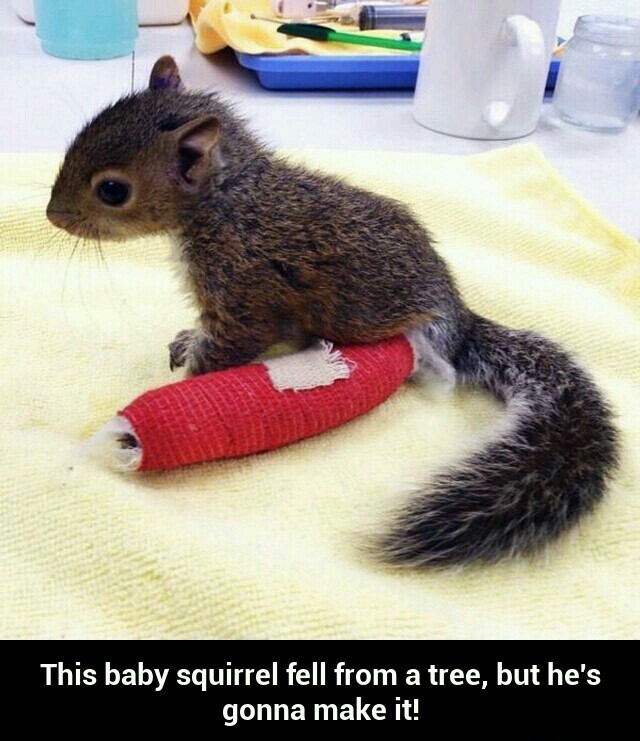 It is necessary to put a nest in which pieces of paper, cloth, moss and cotton are put so that the pet can equip it at its discretion. During cleaning, it should not be touched. The aviary needs a pallet so that you can clean it up without scaring the animal. Please note that they are quite "smelly", so you will have to clean the cage often. Recommended daily cleaning (maximum - every other day). Reproduction Bears the offspring of the squirrel for 35 days. From 2 to 10 (sometimes 12) naked and blind baby squirrels are born. Only after 14 days they will be covered with fur, and on the 28th day their eyes open. Closer to 2 months, babies become practically independent, and by 5 months they become sexually mature individuals. At home, the average life span of a squirrel is longer, but it is not always possible to get offspring.
It is necessary to put a nest in which pieces of paper, cloth, moss and cotton are put so that the pet can equip it at its discretion. During cleaning, it should not be touched. The aviary needs a pallet so that you can clean it up without scaring the animal. Please note that they are quite "smelly", so you will have to clean the cage often. Recommended daily cleaning (maximum - every other day). Reproduction Bears the offspring of the squirrel for 35 days. From 2 to 10 (sometimes 12) naked and blind baby squirrels are born. Only after 14 days they will be covered with fur, and on the 28th day their eyes open. Closer to 2 months, babies become practically independent, and by 5 months they become sexually mature individuals. At home, the average life span of a squirrel is longer, but it is not always possible to get offspring.
Only with a well-balanced diet and sufficient physical activity, fluffy beauties are able to please their owners with the appearance of babies.
To make friends with a squirrel, it is necessary - as often as possible to treat it out of your hands, trying to ensure that it goes into your hand.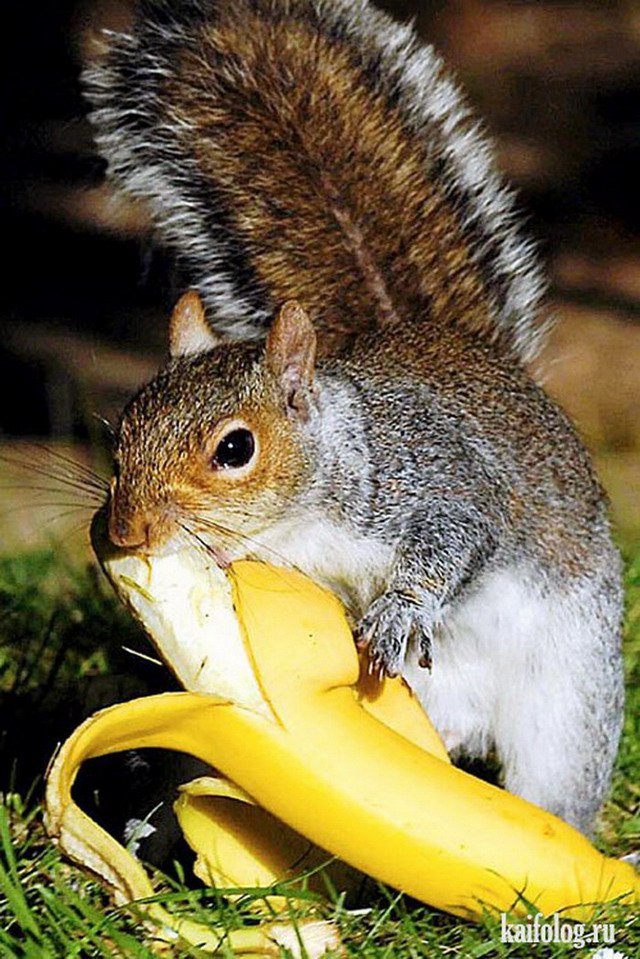 And only then can you stroke it freely. But we must not forget that the squirrel has a “short memory” and without regular communication it quickly runs wild.”
And only then can you stroke it freely. But we must not forget that the squirrel has a “short memory” and without regular communication it quickly runs wild.”
However, when I also expressed a desire to have a squirrel at home, the specialist warned me.
The animal sheds heavily. At home, due to improper protein content, they often suffer from obesity, diseases of the bones and joints, beriberi is often found, in addition, if they are allowed to run around the apartment, they will taste everything they come across. Naturally, this can lead to poisoning. Animals also get sick with infectious diseases, such as plague, encephalitis, scabies, and skin fungus. And it is almost impossible to create such conditions in a standard city apartment.
The worker agreed with us that help for the squirrels is badly needed. This is important in winter and autumn, when the stocks of animals are severely depleted. You just have to do it right. This inspired us to create a booklet and a survey.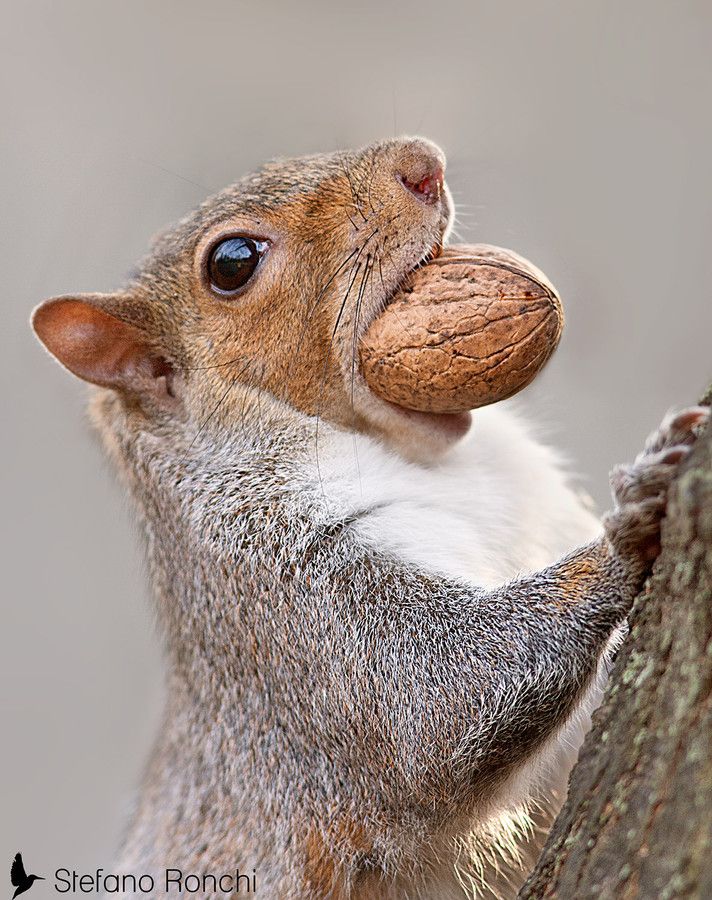
2.5 Questioning.
For the survey was selected 4 B class.
The vast majority of children expressed sympathy for the animal. The respondents expressed the same solidarity when answering the second question. Most felt that under natural conditions, the squirrel is much more comfortable. We were interested in the following preferences of the respondents. It is presented in the diagram. If you interpret the results, you can find that the majority of students believe that it is necessary to feed the squirrels living in our forested area all year round. 10% suggest that such a need remains only in the winter. 6% - for the natural course of events.
3. Reasons why the squirrels that live next to us need our support.
Based on the results of the survey, we deduced the reasons why squirrels need to be taken care of and fed.
1. Chaotic deforestation, not only for industrial purposes, but also by ordinary inhabitants, leads to the loss of squirrels of their homes and supplies.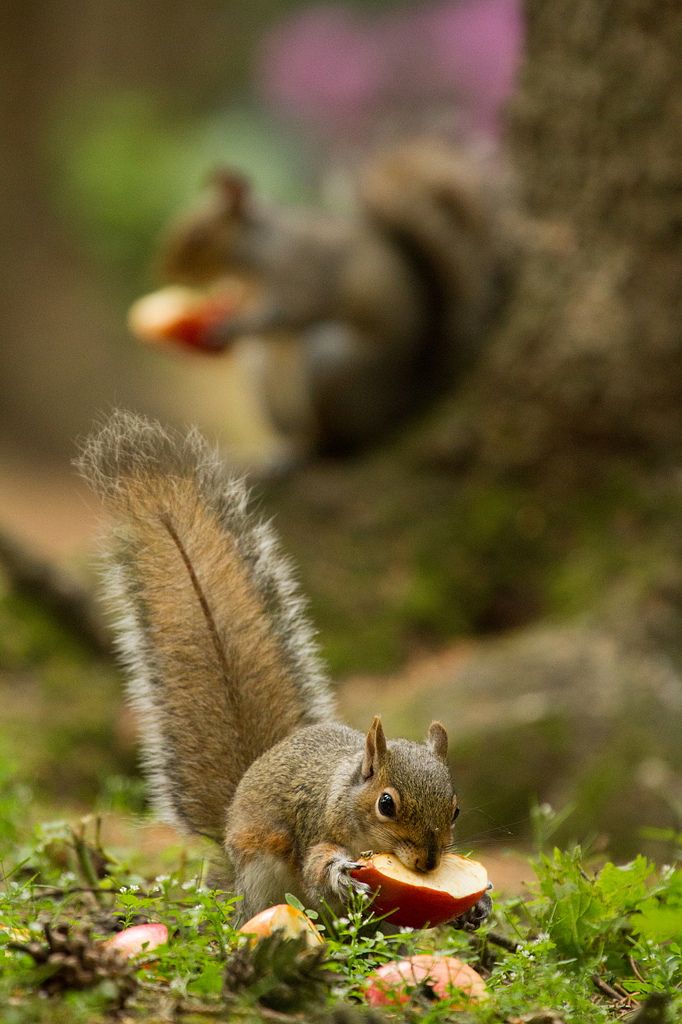
2. Squirrels suffer from diseases that are carried not only by the inhabitants of the forest, but also by domestic animals that are walking in the forest park zone. And during the period of illness, the animals cannot actively get their own food.
3. Unfortunately, proteins do not have a good memory, so they often forget where their supplies are.
4. Proteins often lack food. They make their way closer to residential buildings. In search of food, they wander into landfills, where they are poisoned by various wastes.
5. Running from place to place in search of food, animals get hit by cars.
6. A lot of snow fell this year. What prevents proteins from getting to their reserves.
7. In Russia, squirrel is harvested for its fur. And in our forest there are such "hunters".
8. Since the forest park area is located next to the residential complex, frequent human companions, rats and mice, also look into the forest, they eat part of the squirrel reserves.
9. Cats and dogs prey on squirrels.
4. Practical recommendations for feeding squirrels in natural and artificial conditions.
Feeding squirrels in winter is not at all difficult - they usually eat only 35 g of food per day in winter. In the summer, their diet expands, as do our capabilities.
The right food choice.
Nuts: pine nuts, walnuts, hazelnuts (do not peel). Seeds: pumpkin, watermelon. Apples, vegetables (eg small pieces of carrots) , dried fruits.
Sunflower seeds (small) . Mushrooms (fresh, frozen, dry) - white mushroom, boletus. Chicken and quail (raw and boiled) eggs, cottage cheese, dry beef and fish bones.
Herbs - dandelion, wood lice, goat's beard, sorrel, oxalis, clover.
You can make a feeder for squirrels.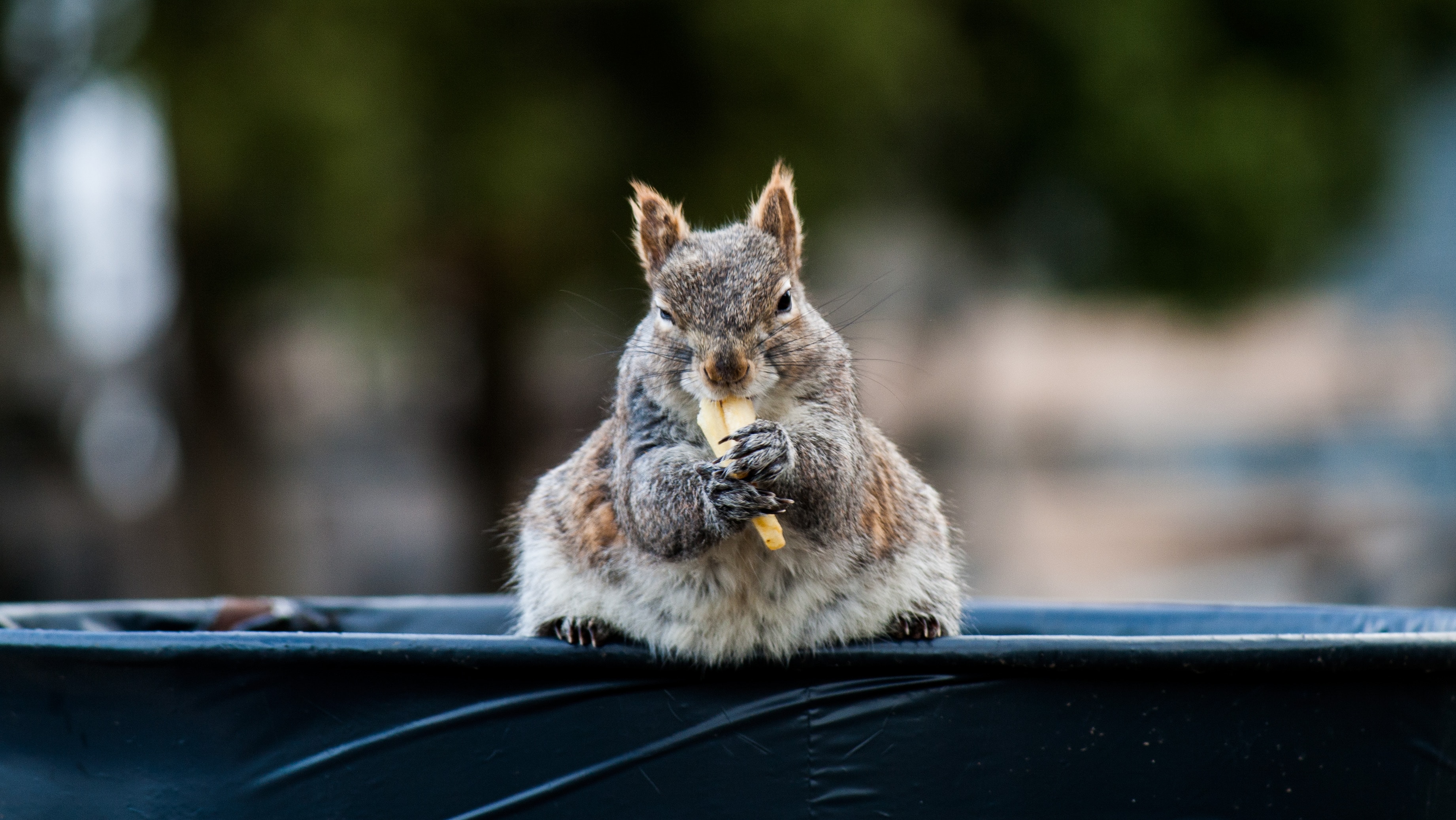
No! Peanuts, pistachios and almonds, candy and fast food.
Poisonous herbaceous plants: belladonna, nightshade, corydalis, lily of the valley, kupena.
Precautions.
1. It must not be forgotten that proteins carry various infections and can suffer from dangerous diseases. They may feel fear and bite in self-defense.
2. People can take advantage of the credulity of the animal and harm it.
3. Contact a petting zookeeper for information about the animal's health status.
4. Do not touch the animal unless you are sure it is safe.
5. I do not recommend to completely reduce the distance between you and the squirrel in nature.
5. Conclusion.
According to the results of the survey, most of the respondents decided that it was necessary to help the squirrel, several guys suggested that there was no need to take care of wild animals, because.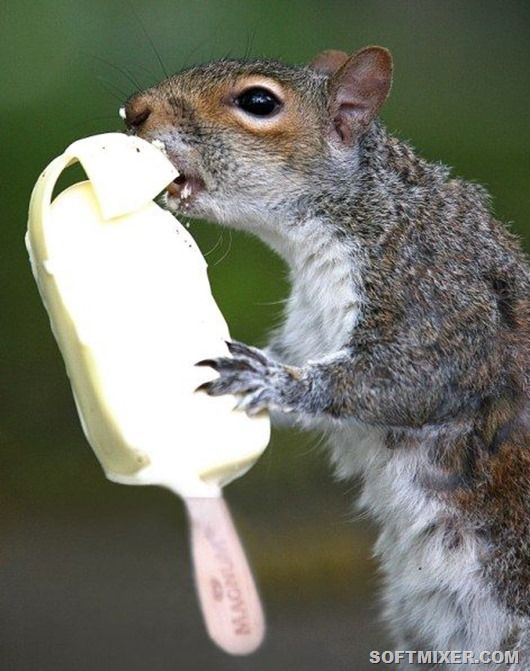 nature has already done it, 3 people did not come to a definite conclusion.
nature has already done it, 3 people did not come to a definite conclusion.
The goal of our study has been achieved. Now we know that in artificially created conditions, the life of a squirrel is much longer due to a complete balanced diet and the absence of predators. At the same time, such animals are not able to survive in nature.
Under natural conditions, it is more difficult for them to survive, danger threatens from everywhere - from the air, and from trees, and from the ground. We know that it is much better not to interfere with the natural course of events in nature, so as not to interfere with natural selection. But under the circumstances, those animals (for example, squirrels) that live in the Fir Mountains forest park zone need our protection and support. We have become a part of their life and responsible for the state of the ecosystem. Care must be correct and safe.
When creating this work, I received important scientific knowledge about the world around me and experienced the joy of communicating with living beings.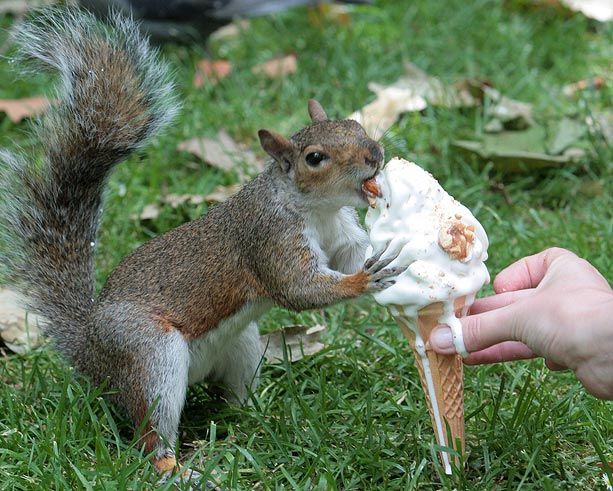
6. References.
http://ru.wikipedia.ru.
http://fb.ru/article/136568/prodoljitelnost-jizni-belok-v-prirode-i-v-nevole-skolko-jivet-belka
http://sarzoomir.com/razvedenie-Belki-obiknovennoj-v-nevole.html
Yakhnin, L. Belochka / L. Yakhnin; ill. S. Adalyan. - M.: EKSMO, 2009.– 13 p.: color. IL
Rakhmanov A.I. . Proteins in nature and at home. Publisher : Aquarium-Print LLC, 2008.
Photos from the personal archive.
Job views: 686
How safe are diets? - Voice
Spring is a time when many people think about their appearance and their figure. During the winter, the diet was high in calories and helped to gain extra pounds. The first thing that comes to mind for people who want to lose weight is to go on a diet. The Voice of Cherepovets spoke with nutritionist Viktoria Molkanova about diets and eating habits.
What is a diet? Let's start with the fact that diet is an ambiguous term. Some diets are designed to preserve the health of the patient and are recommended for any diseases, after operations, etc. For example, in diseases of the gastrointestinal tract, nutrition should be balanced, be gentle, preference should be given to mashed, well-boiled, liquid, mushy or pureed dishes. But more often this word goes side by side with the concept of "overweight".
Some diets are designed to preserve the health of the patient and are recommended for any diseases, after operations, etc. For example, in diseases of the gastrointestinal tract, nutrition should be balanced, be gentle, preference should be given to mashed, well-boiled, liquid, mushy or pureed dishes. But more often this word goes side by side with the concept of "overweight".
Nutrition should be balanced and rational.— In the understanding of most people, diet is something magical, thanks to which we can quickly lose weight. But in most cases, the diet does not solve the problem of obesity, because this is a temporary measure, while obesity is a chronic disease with a tendency to relapse, explains Victoria Molkanova . - Diets are universal, they do not take into account the individual parameters of a person (weight, height, age, gender), his physical activity and taste preferences. And most importantly, they do not take into account human comorbidities, which can lead to their exacerbation or the emergence of new health problems.
After using the diet, the lost weight in most cases returns. This negatively affects the metabolic processes in general, the work of the endocrine and digestive systems. The diet does not work for the formation of proper eating behavior and laying new eating habits, while this path is optimal for people with obesity and overweight.
Popular techniques . One of the most popular weight loss methods is the Dukan diet. Its essence lies in the use of foods rich in proteins, with a limited content of carbohydrates and fats.
- The diet changes from the diet phase. Oat bran and lean protein products will remain unchanged,” says Victoria. — This diet is quite effective, comfortable. But there are contraindications. These include diseases and disorders in the functioning of the kidneys, gastrointestinal tract and cardiovascular system, diabetes of any type, pregnancy and breastfeeding. Women who are on a protein diet say that the weight is coming off well, but they really miss fruits because they are forbidden.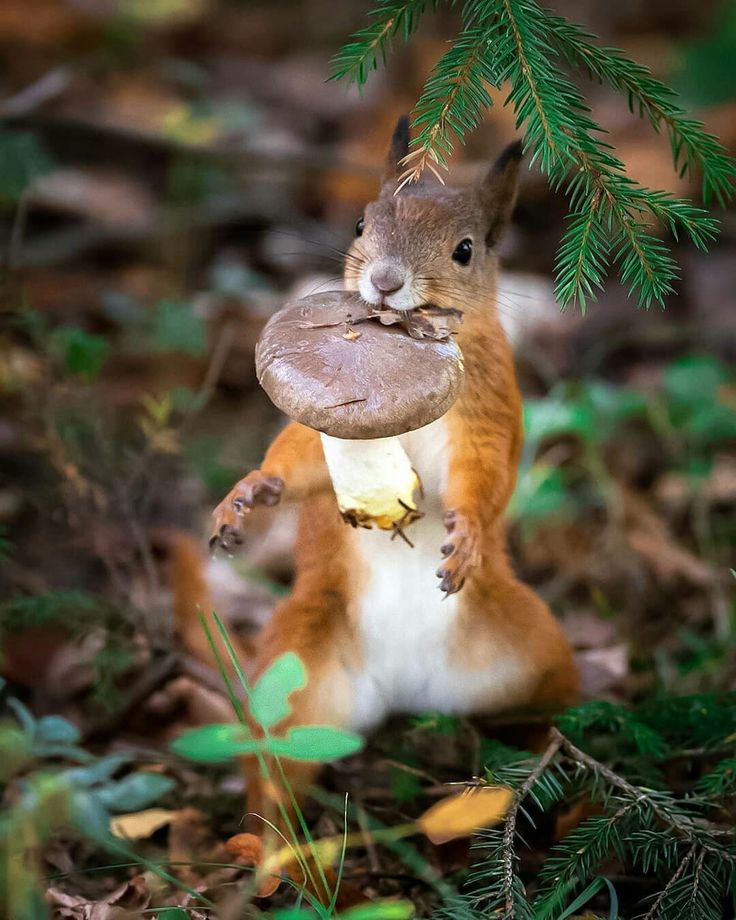
The keto diet is a low-carb, high-fat, moderate-protein diet. You can stick to this diet for a long time, but failures are inevitable - in moments of weakness, a person eats sweets. With a keto diet, a person refuses sweet, starchy foods, cereals, that is, carbohydrates. Carbohydrates are the primary source of energy for living organisms. With a decrease in their number, the body begins to rebuild and take energy from other elements. Diet can adversely affect the brain and nervous system. The brain needs glucose to function, which is part of carbohydrates. But during a keto diet, the brain will use ketones for energy, which do not contain glucose. Because of this, a person feels a headache, fatigue.
In recent years, intermittent fasting has become very popular. If we turn to history, then in 2016 a Japanese scientist proved the principle of autophagy. Autophagy is intracellular scavenging, the ability of a cell to destroy and digest its own contents. The most common intermittent fasting regimen is 16/8.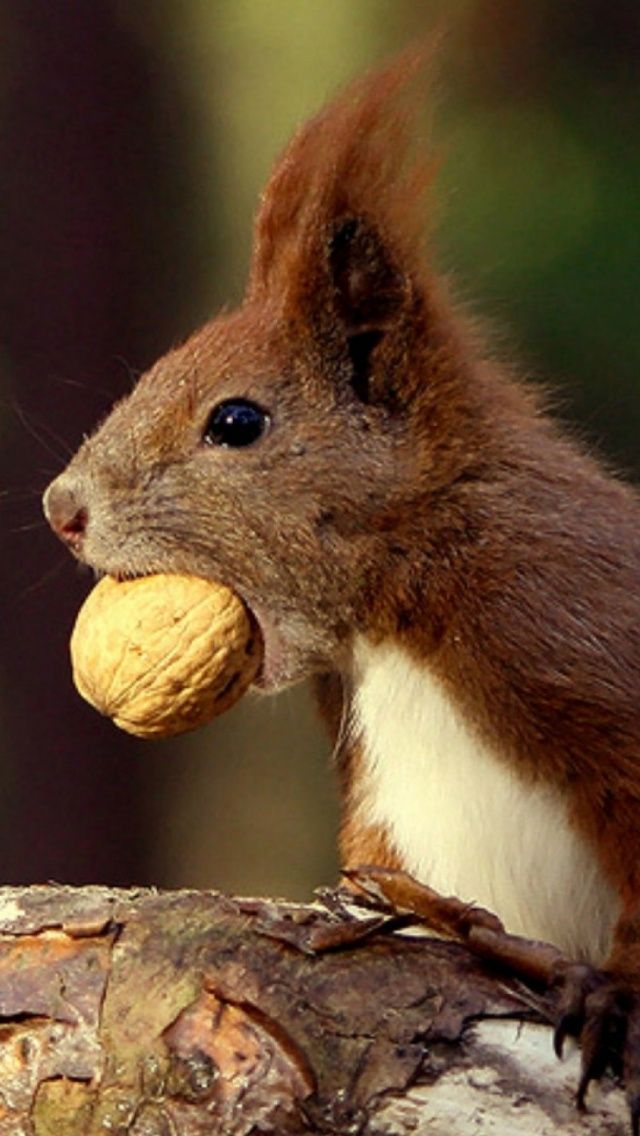 In the interval of 16 hours, a person fasts, and in the remaining interval he eats.
In the interval of 16 hours, a person fasts, and in the remaining interval he eats.
- During these 16 hours, weight loss and fat breakdown occur. There can be two meals in the interval of 8 hours, the nutritionist explains. — Adherents of intermittent fasting usually have a late breakfast and an early dinner. A Japanese scientist conducted experiments on such fasting on mice - they benefited from it. They had a decrease in fat mass, but not muscle mass, cholesterol levels and blood pressure decreased. Intermittent food refusal has also been studied in humans. The subjects experienced weight loss due to a decrease in calorie intake and improved metabolic indicators. But any method that allows you to lose weight will lead to the same positive metabolic effects, so intermittent fasting has no advantages over other diets.
How to lose weight correctly? Answering this question, Victoria noted that for starters, you should give up sugar and sugar-containing products - juices, lemonades, sweets, which contain a lot of calories.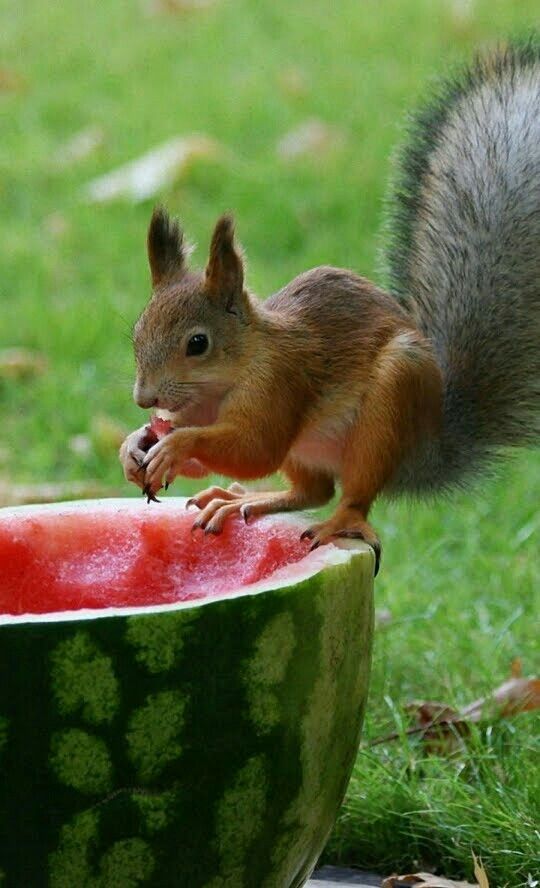
- It is necessary to make your diet varied, include new products in the diet. It is advisable to exclude excess fats - confectionery, pastries, fatty meats. Focus on fish, healthy oils - olive, linseed. Give preference to whole grain bread, buckwheat, lentils, wild and brown rice, bulgur. Don't forget about dietary fiber. Be sure to have vegetables and fruits at every meal. It is useful to use a variety of seeds, now they are on sale. For example, oatmeal with flax seeds is very tasty. Only on a balanced, varied diet will it be possible to reduce weight quite comfortably, easily and for a long time.
A variety of seeds are a useful addition to any dish. According to Victoria, all restrictive diets, of course, give amazingly fast results, but they also have a number of contraindications. Therefore, strict diets are recommended to be carried out with a dietitian so that he can monitor health indicators. It happens that a person removes all fats from the diet, but the benefits of fats for the body are invaluable, they cannot be completely excluded. They are involved in metabolic processes, hormone synthesis. Strict restrictions can quickly lead to a disorder of the endocrine system, and then it will be problematic to restore health.
They are involved in metabolic processes, hormone synthesis. Strict restrictions can quickly lead to a disorder of the endocrine system, and then it will be problematic to restore health.
“Go to bed on time!” Victoria always reminds her clients of the importance of staying awake and asleep:
— We have circadian rhythms that are tuned to keep us awake during the day and sleep at night. These biological rhythms are dictated to us by nature itself. You need to go to bed at 22.00 (the latest at 23.00), and get up at 7.00 so that our hormones work as they should. Growth hormone will help us not to gain excess weight, and the hormone ghrelin, which is responsible for the feeling of hunger, will also self-regulate. In order not to disrupt the chain of interaction of hormones, you need to go to bed on time. A lot depends on this, especially if a person wants to lose weight.
People who work at night and sleep during the day are automatically at risk for obesity and type 2 diabetes.